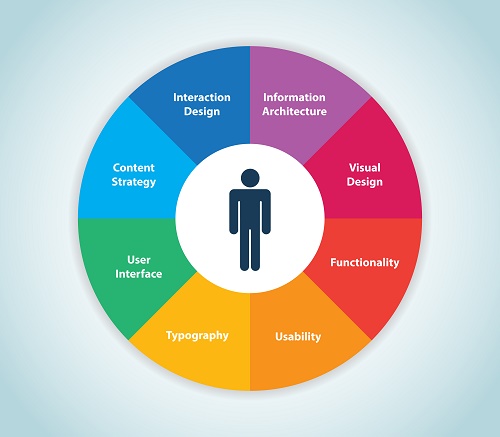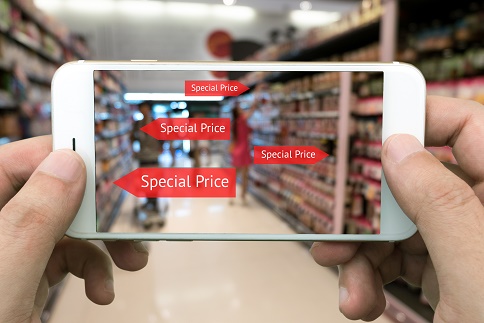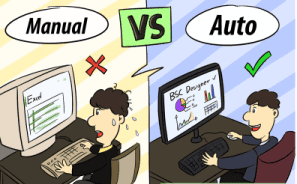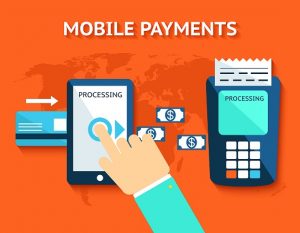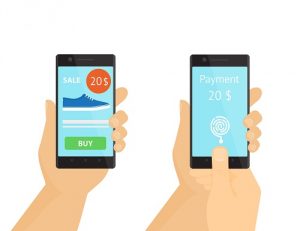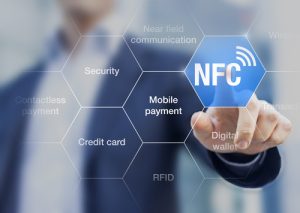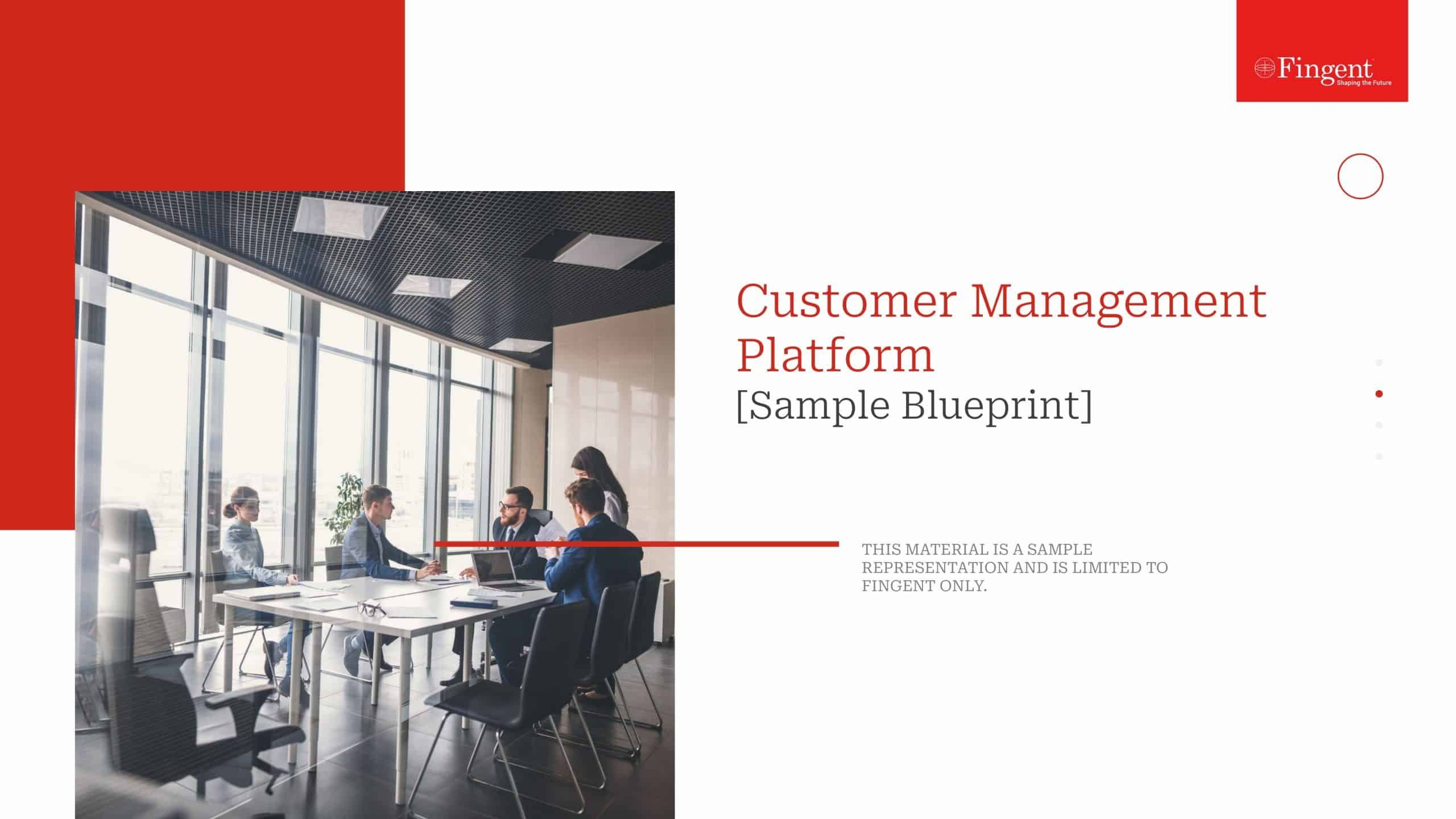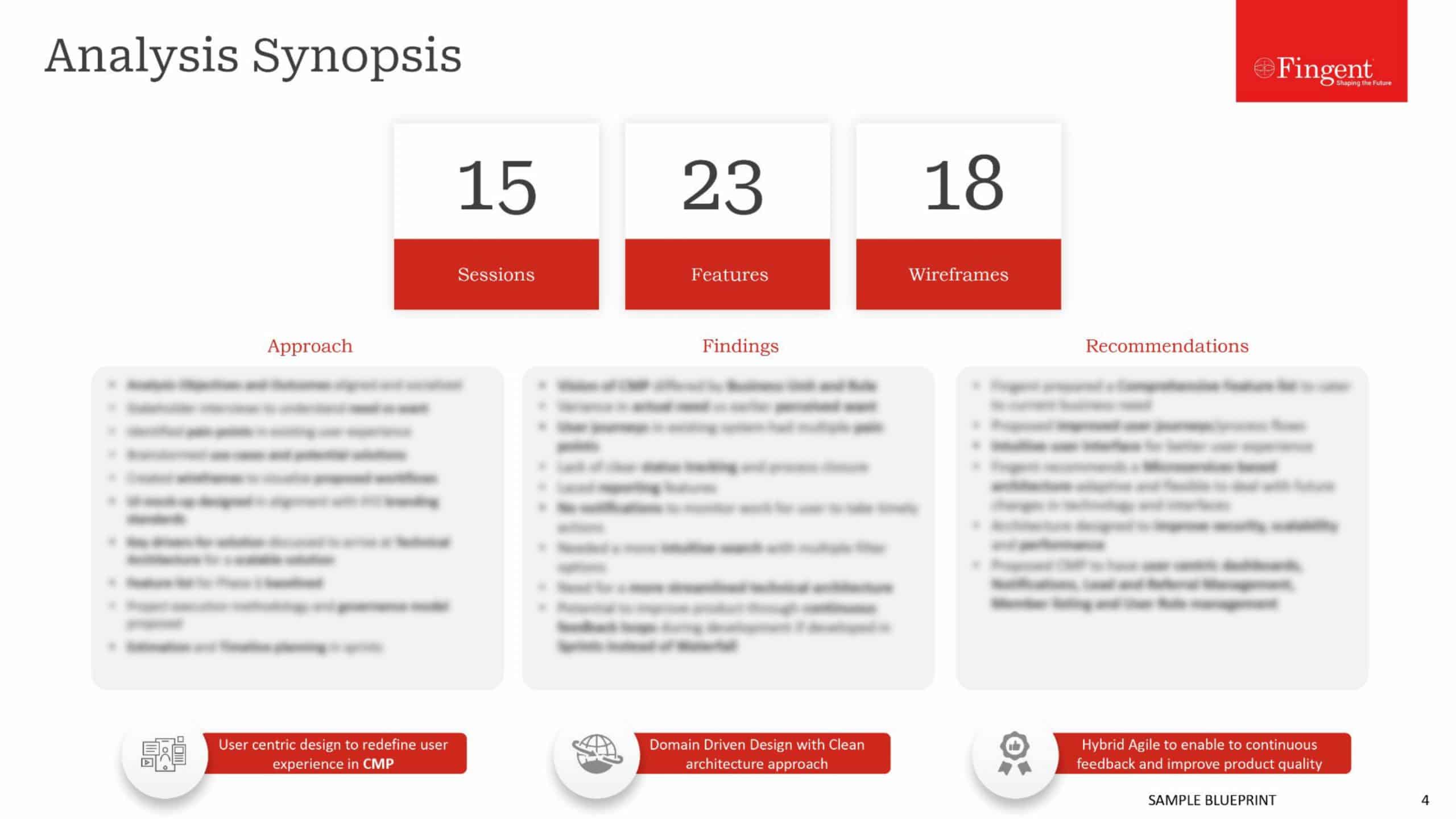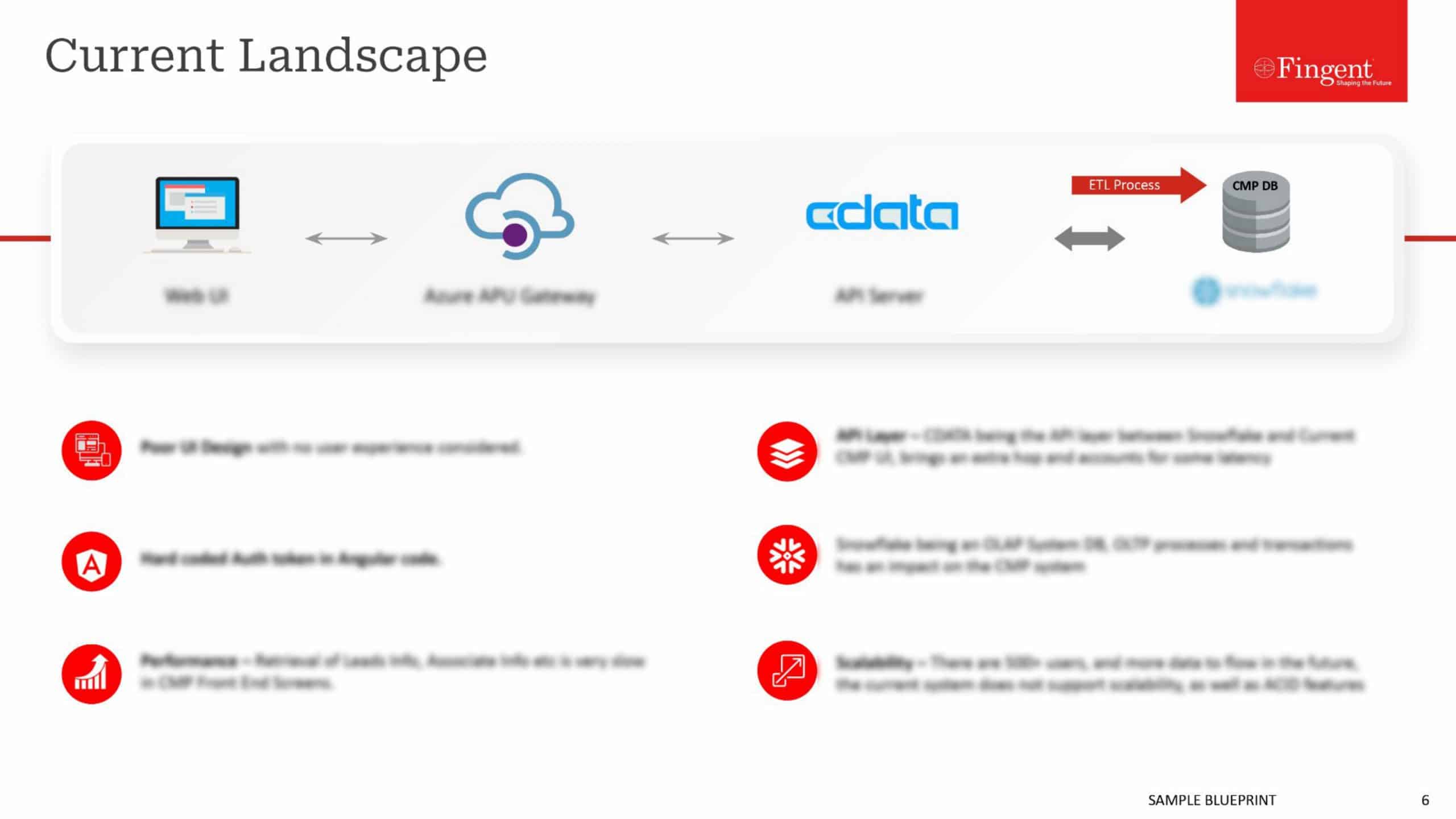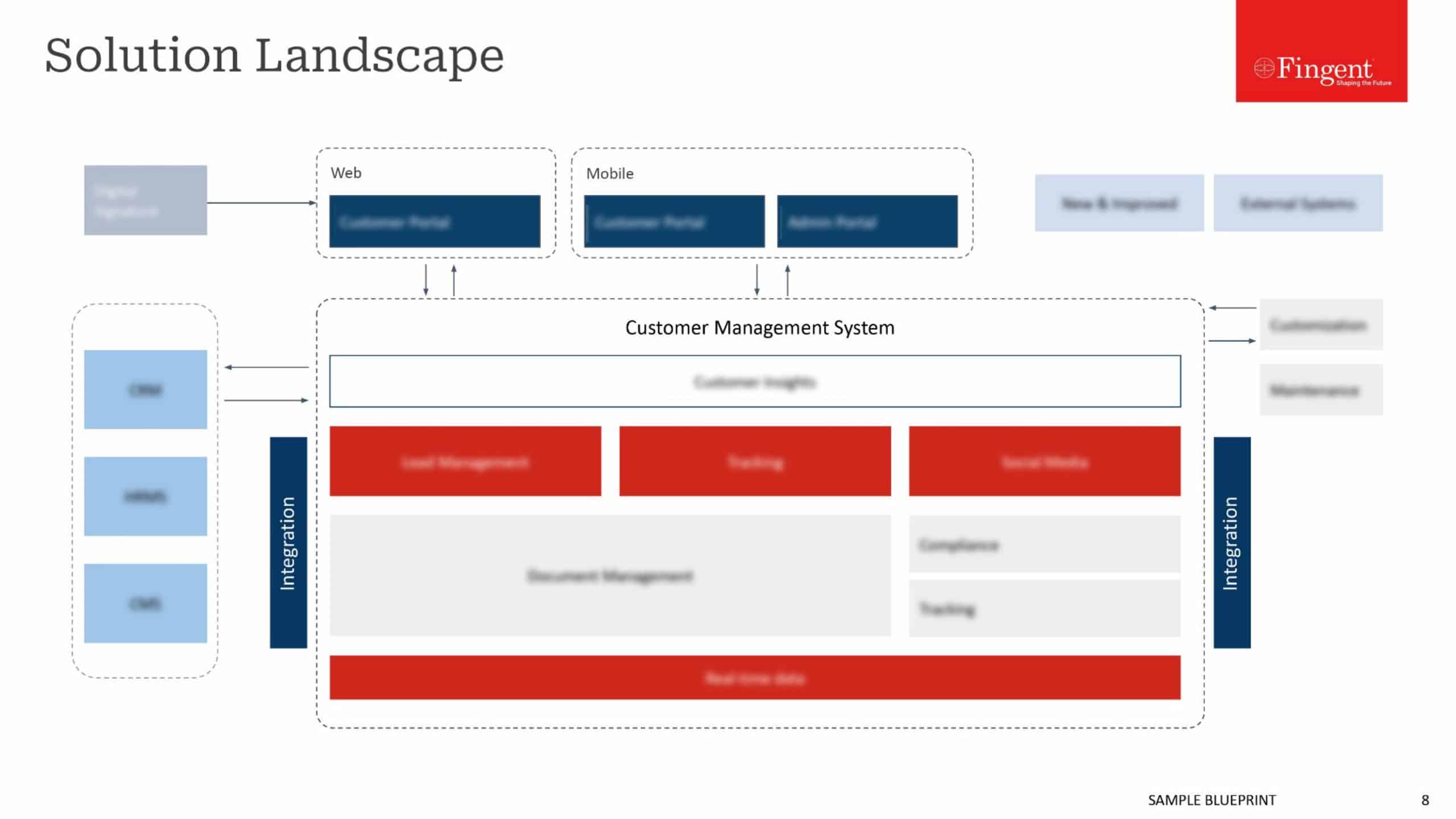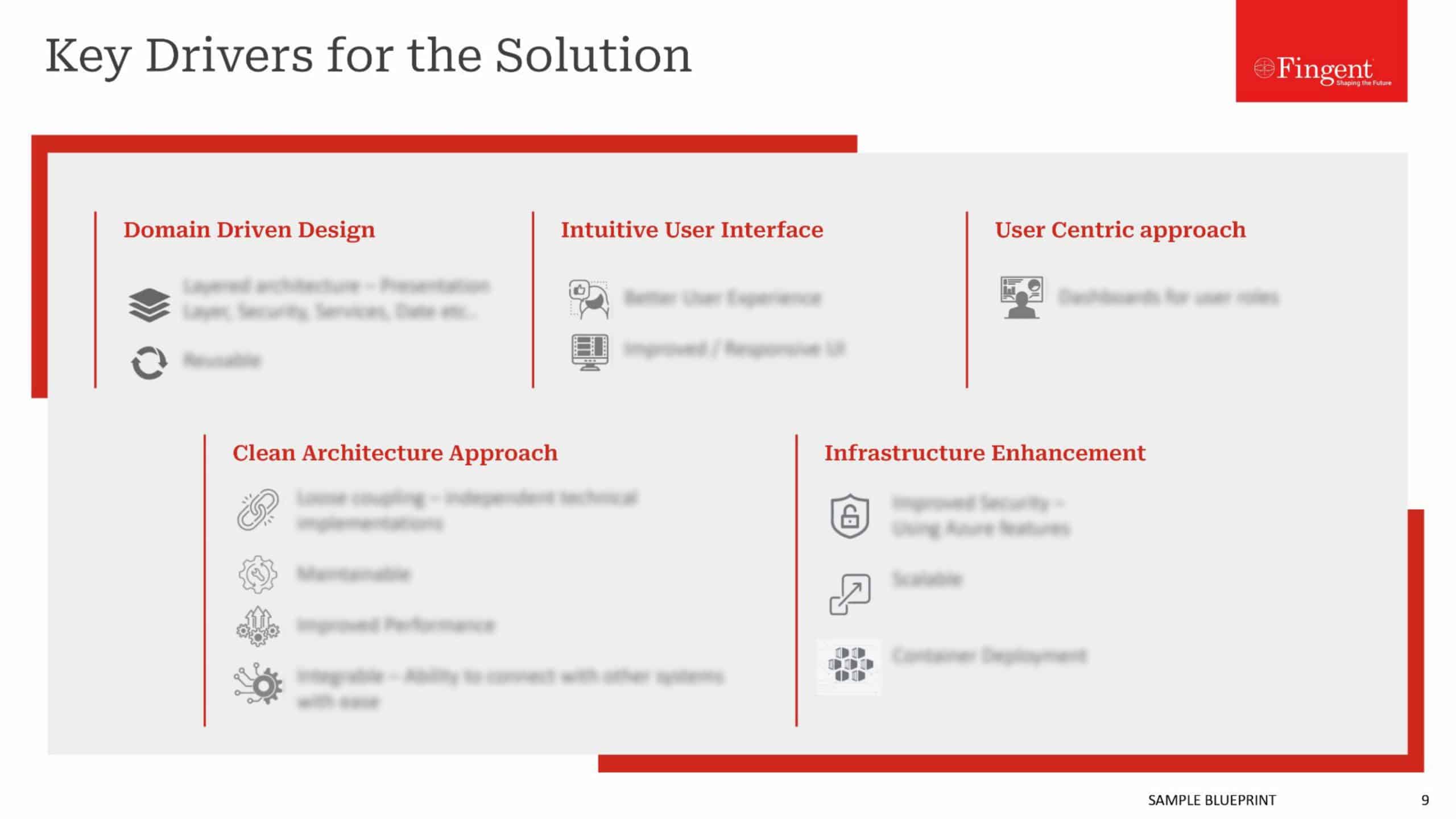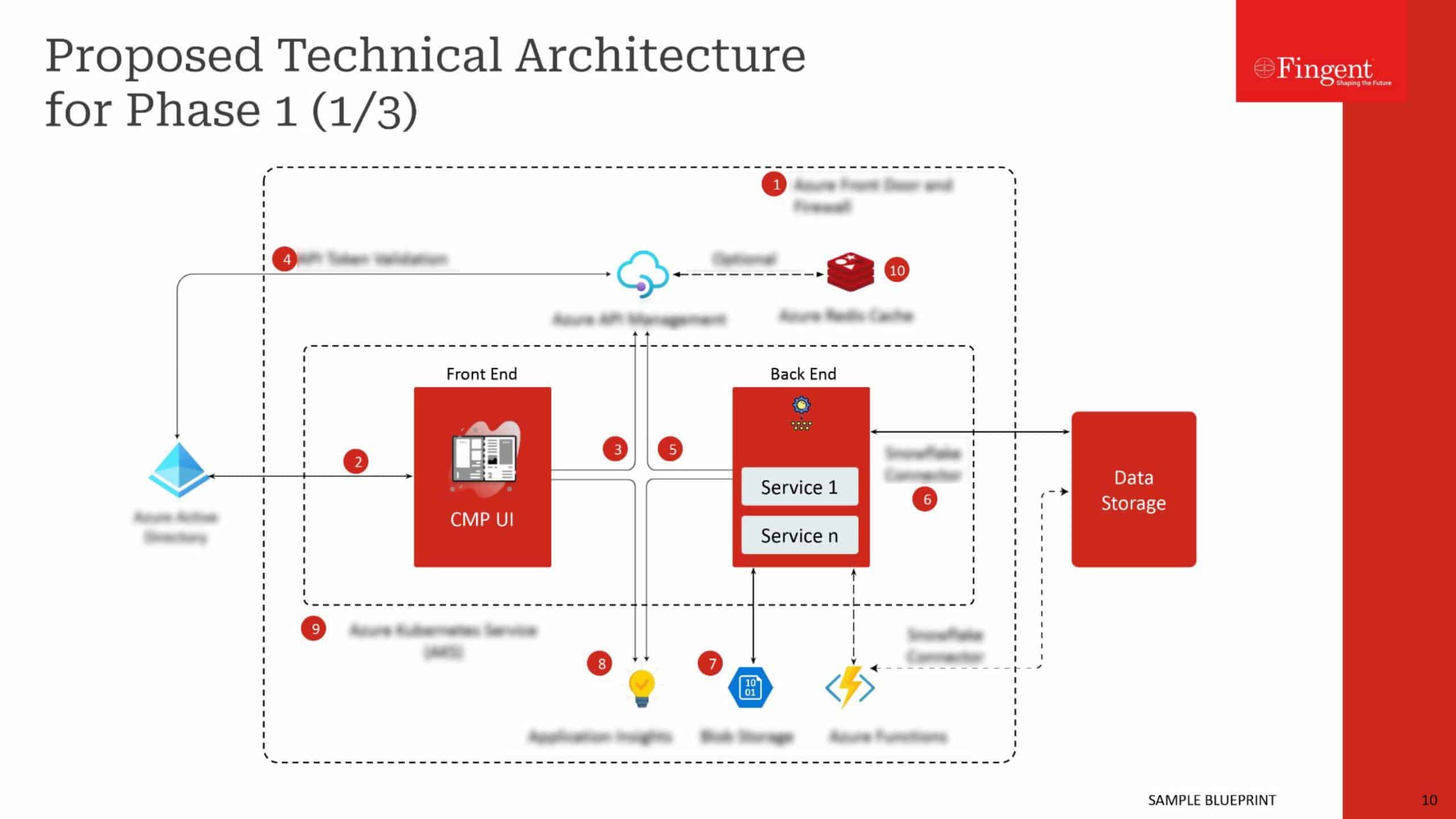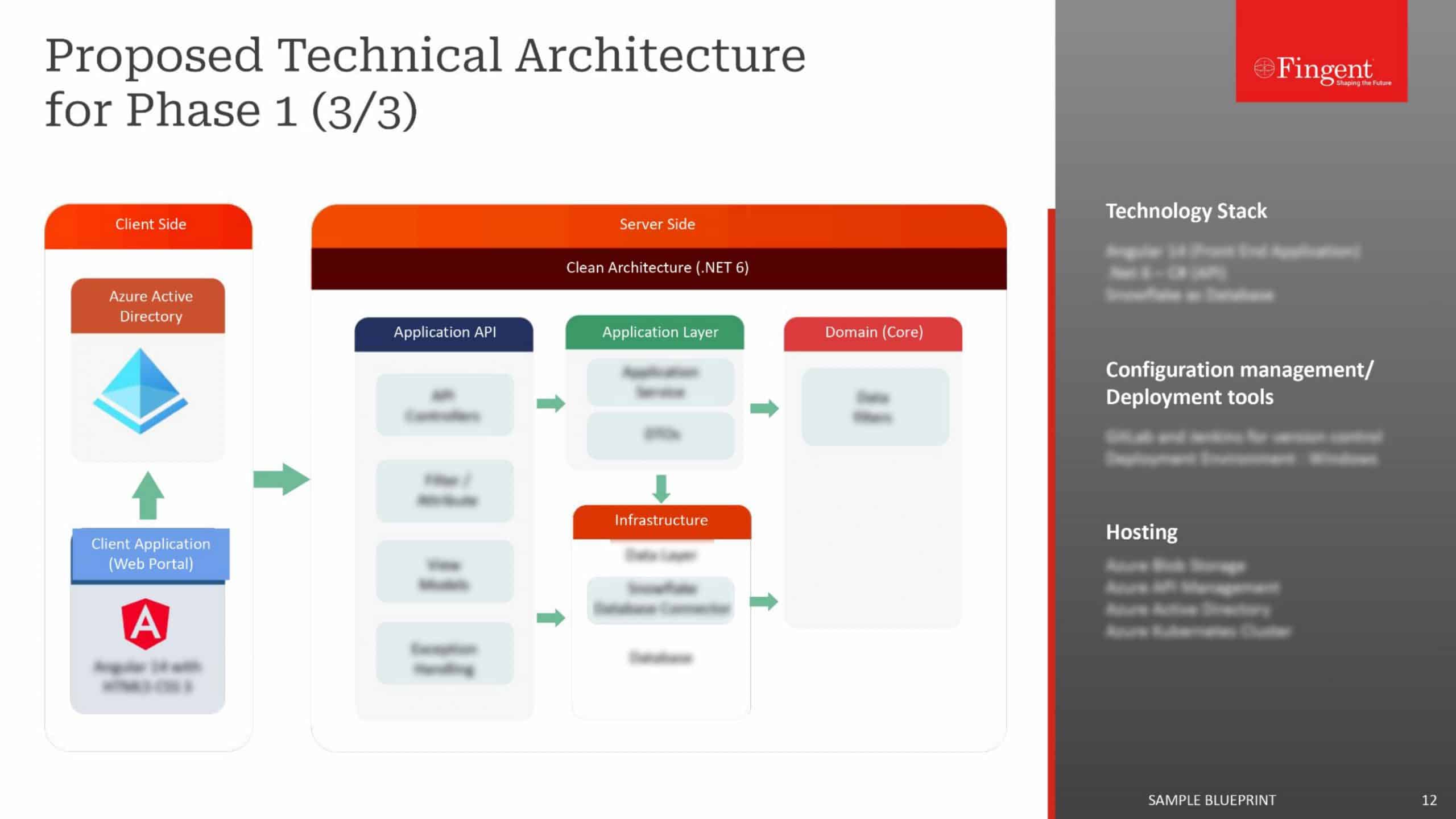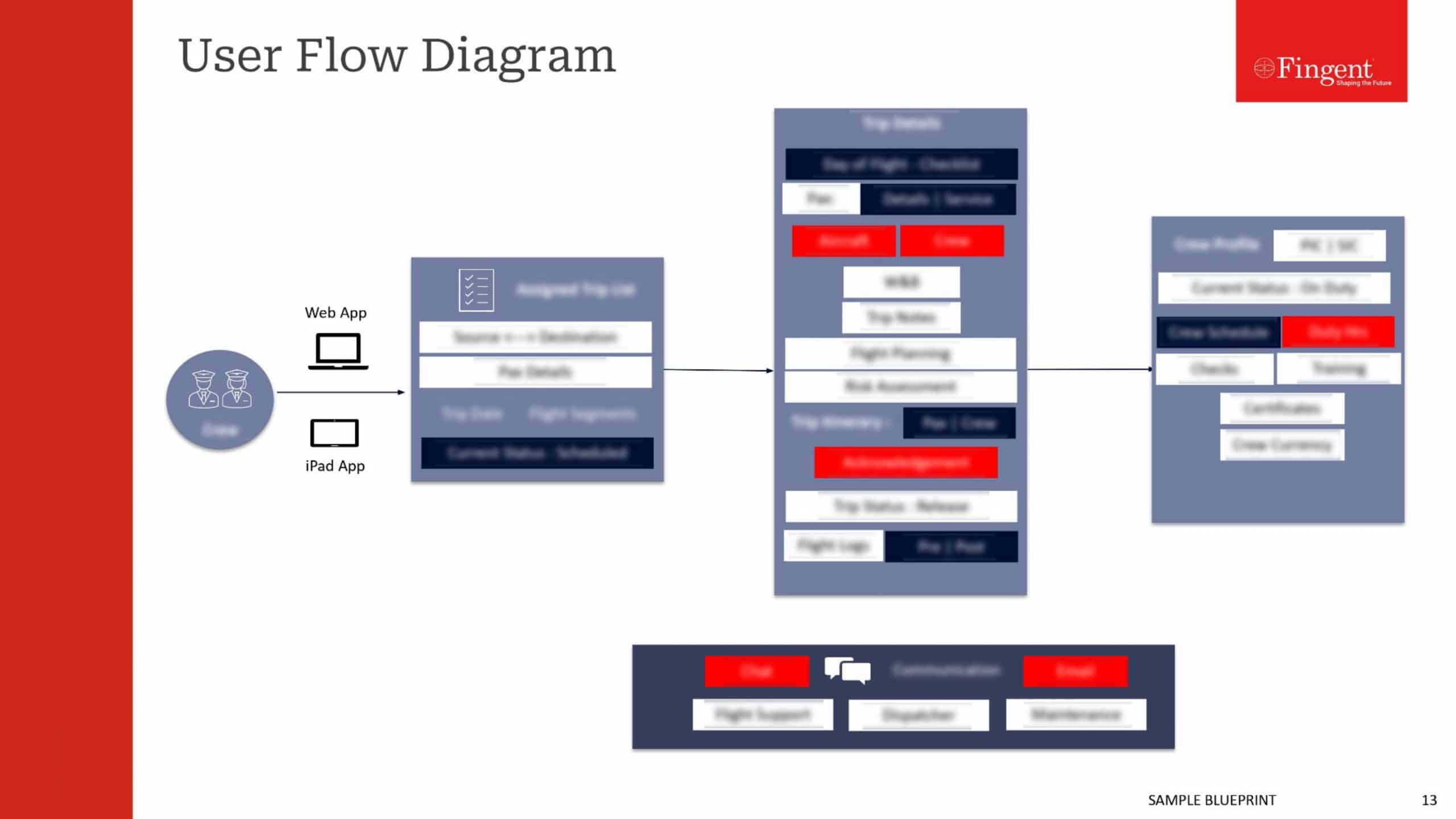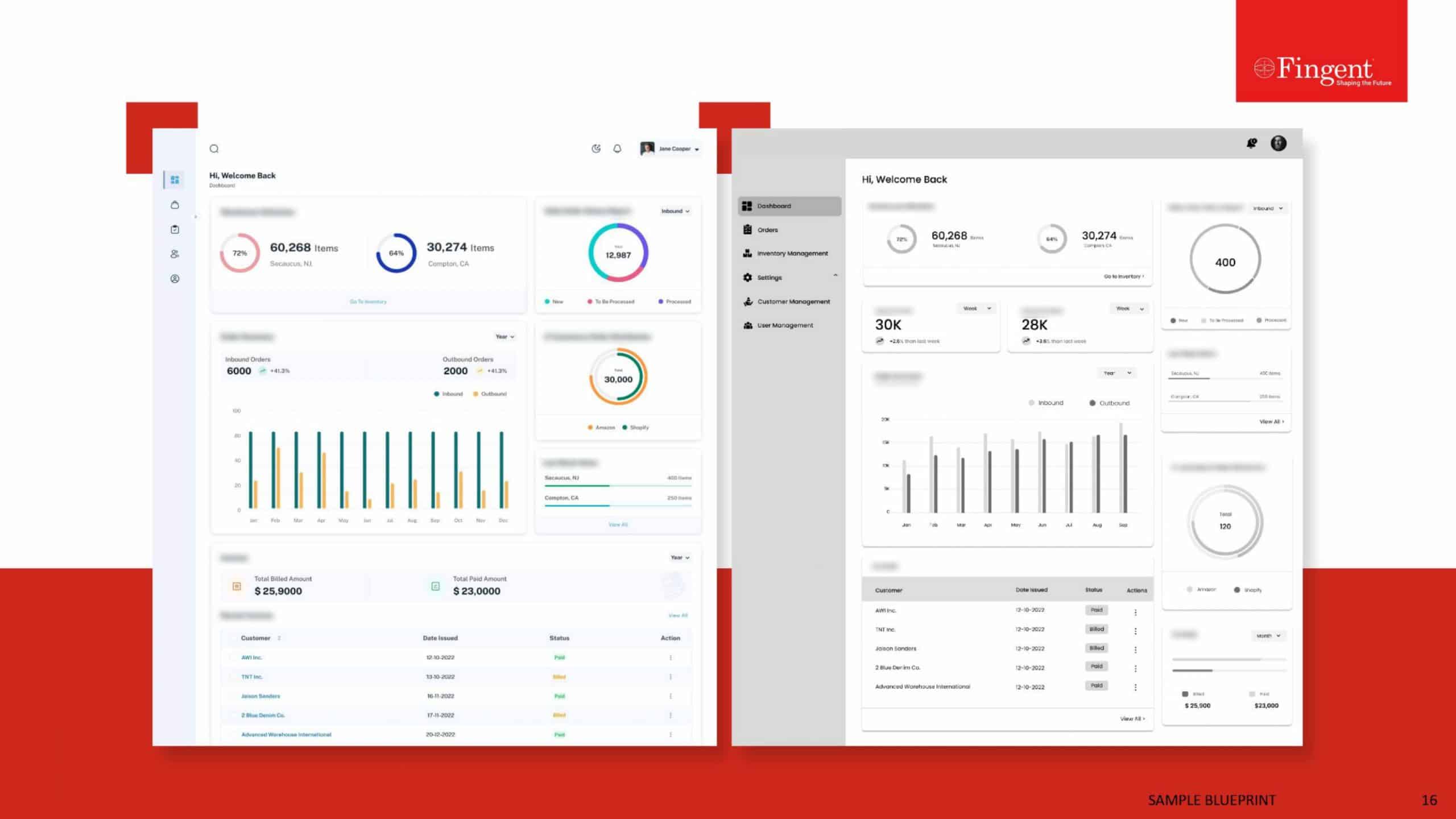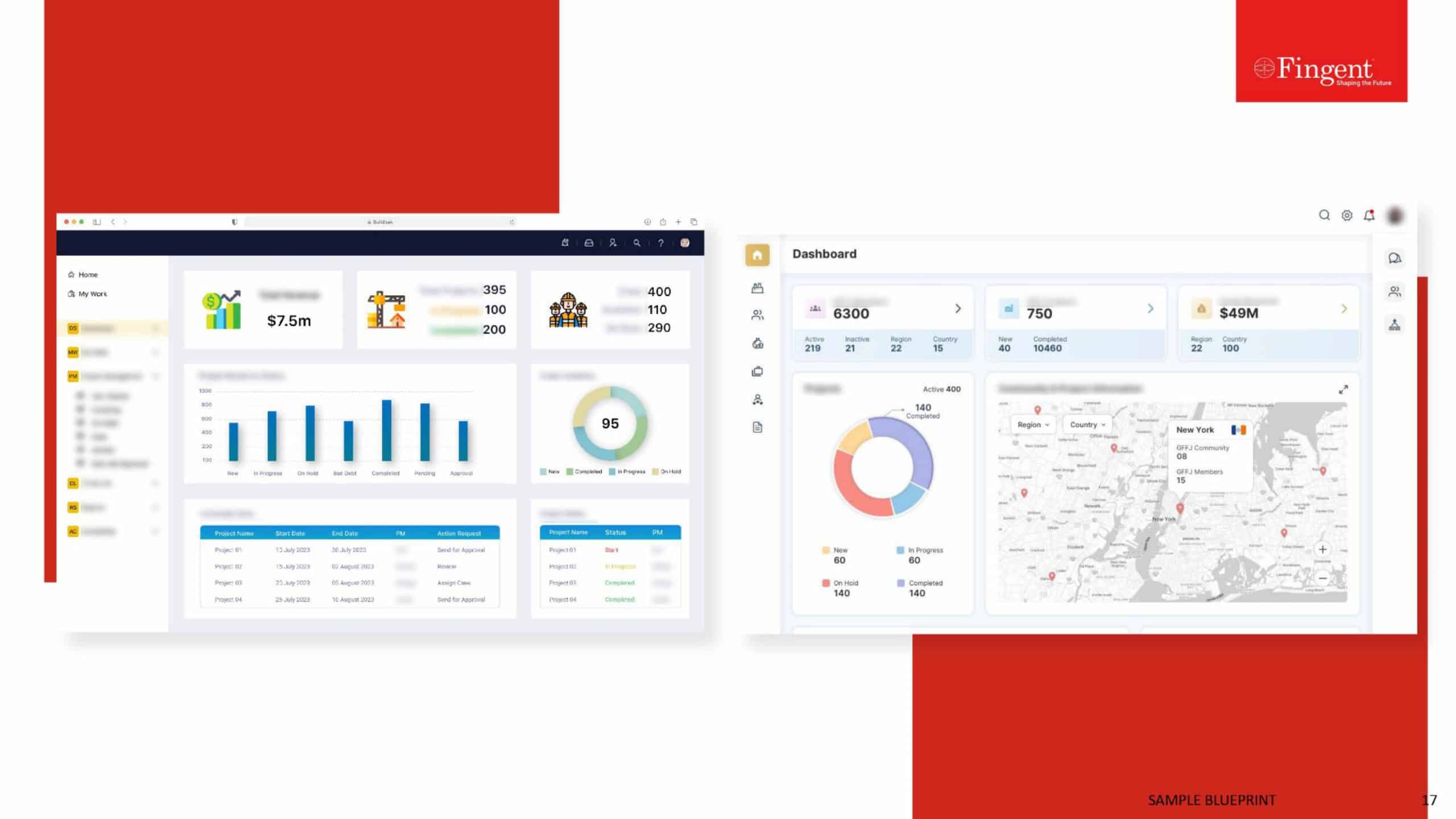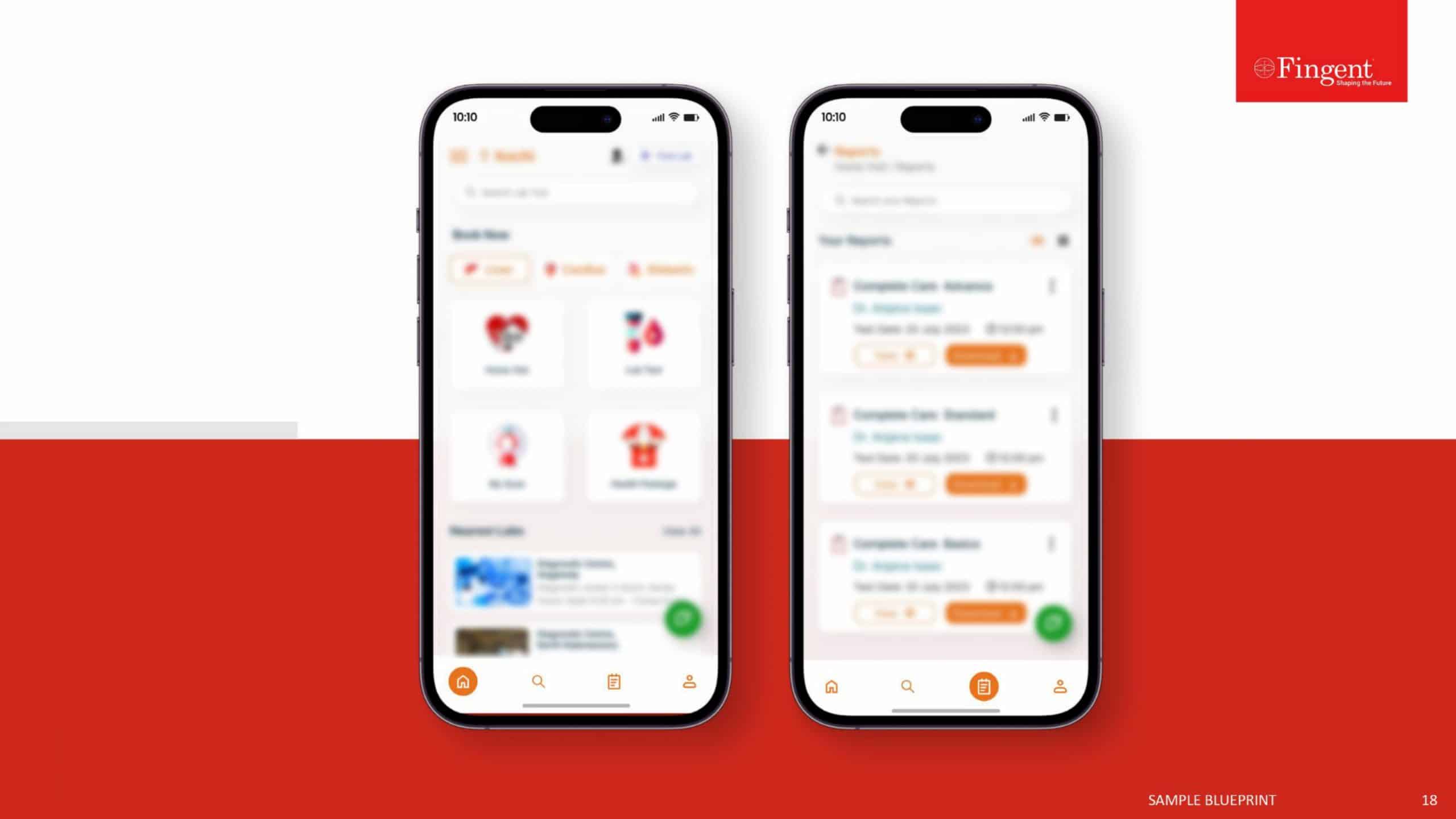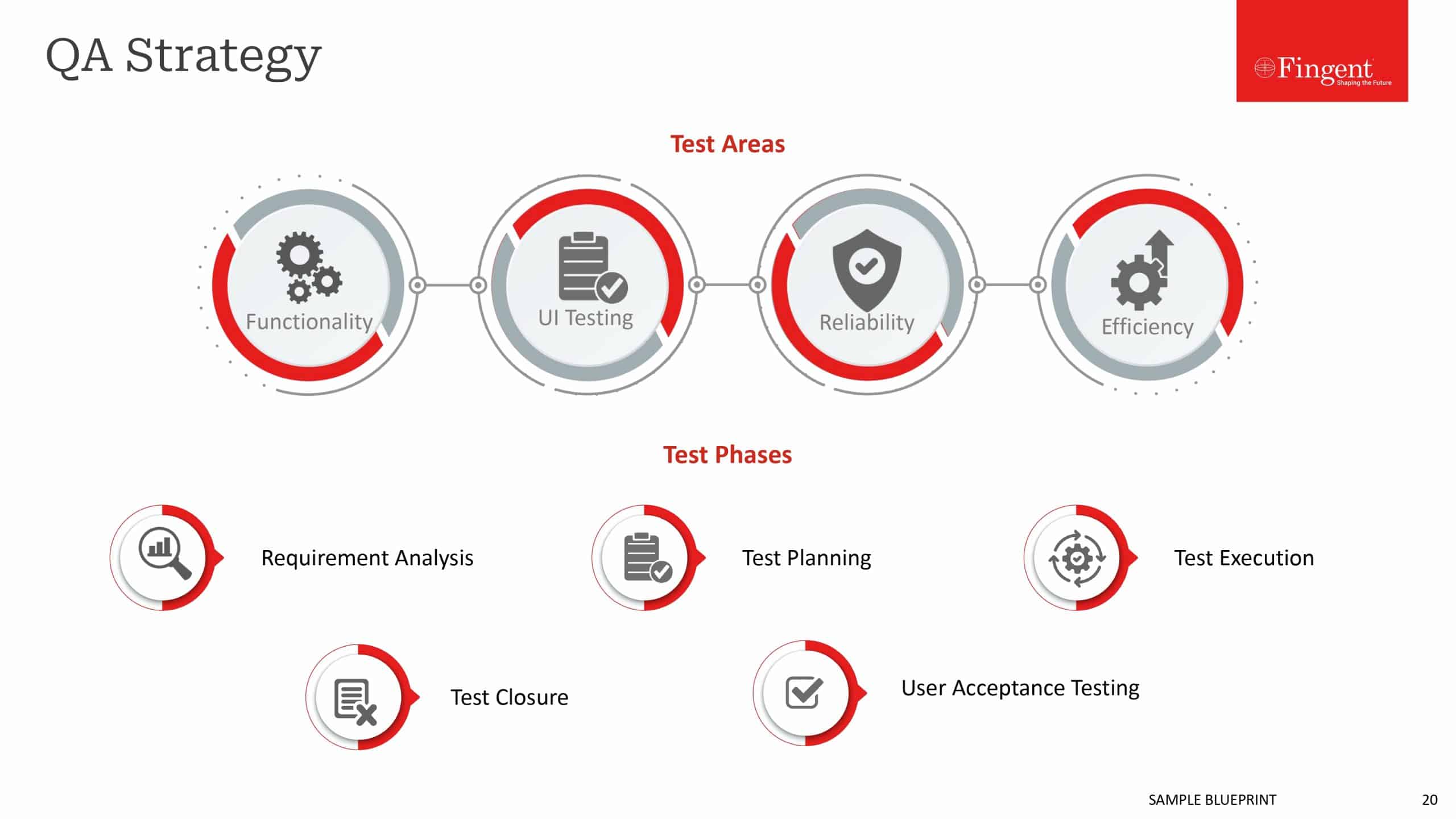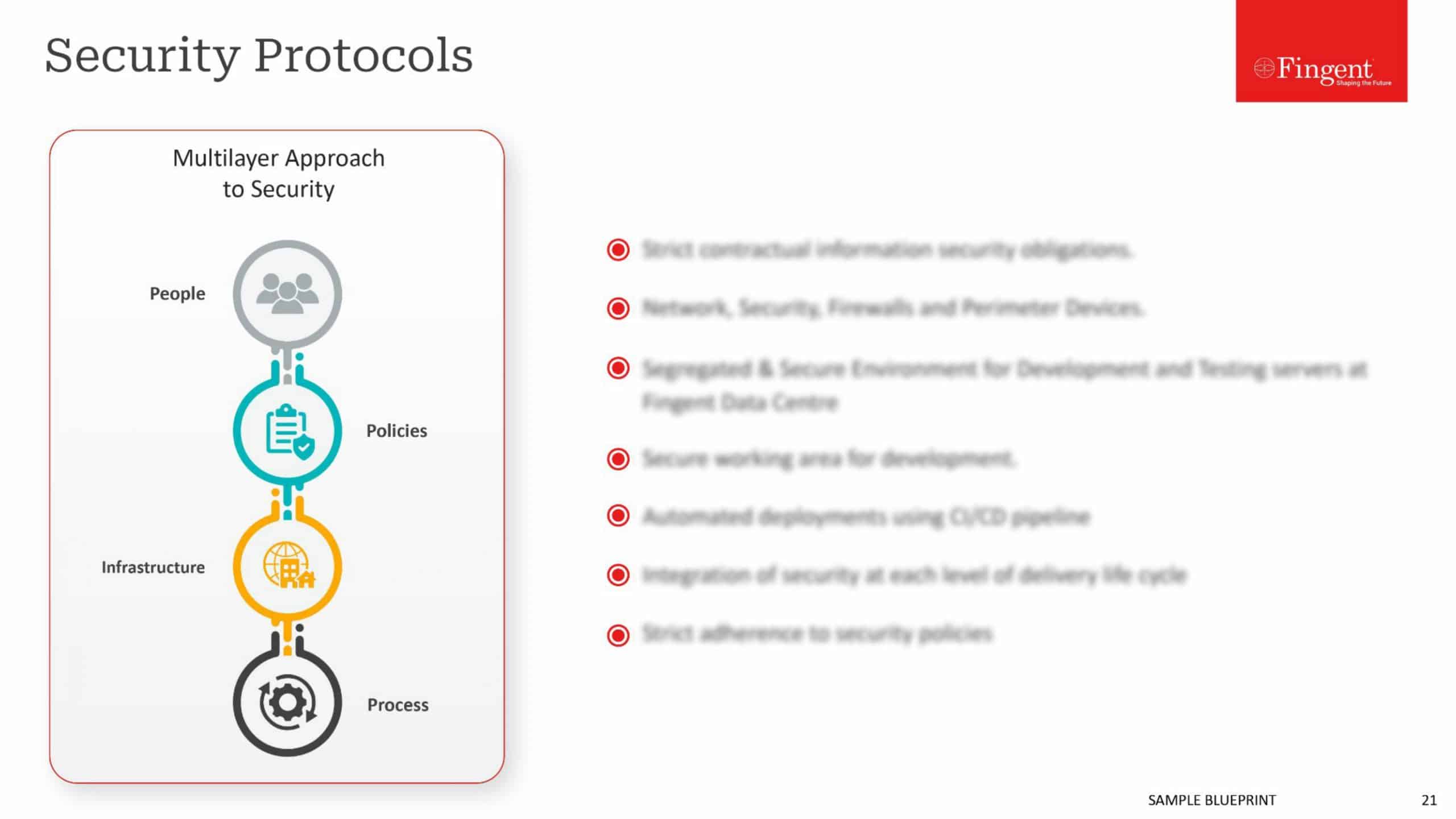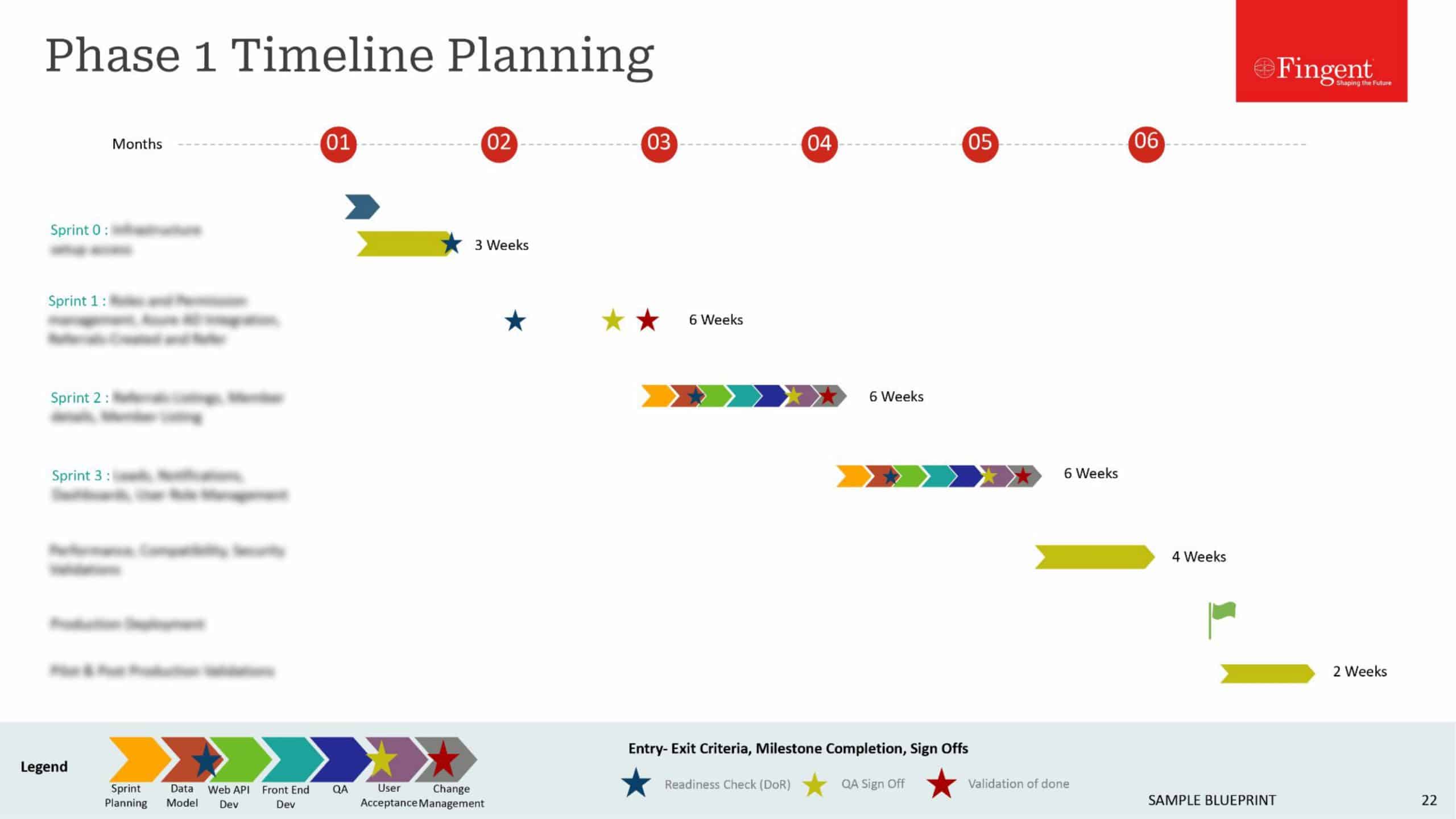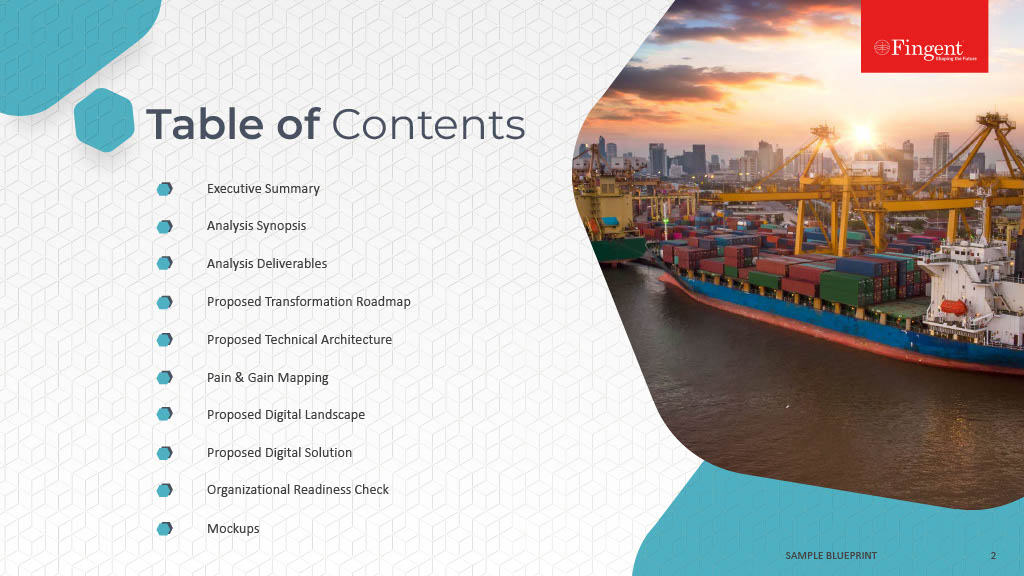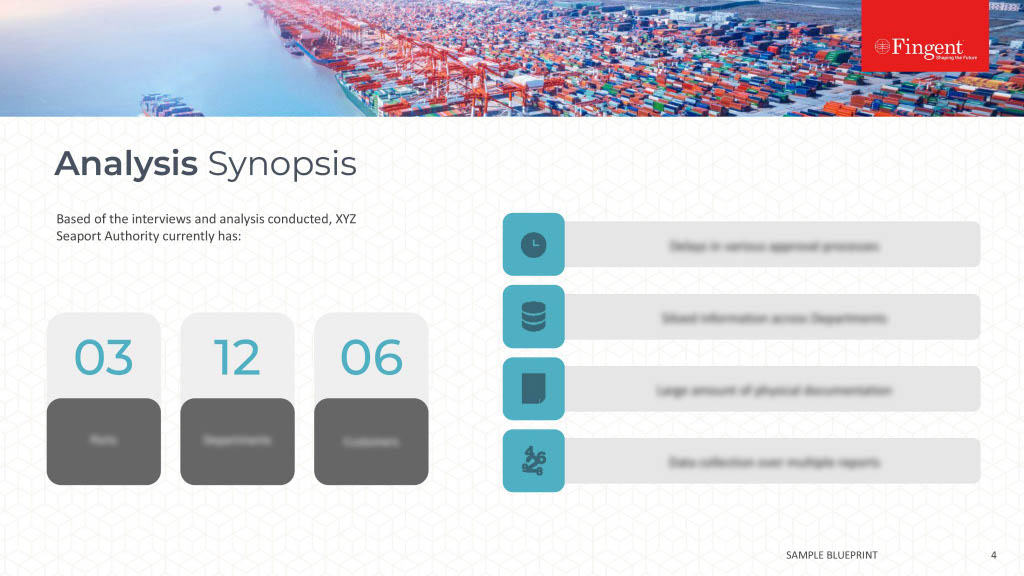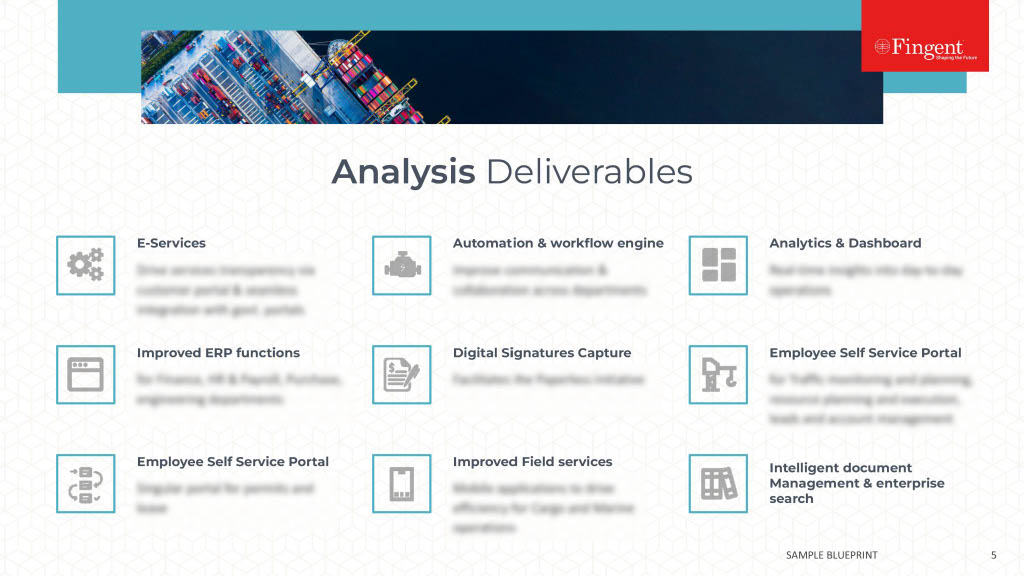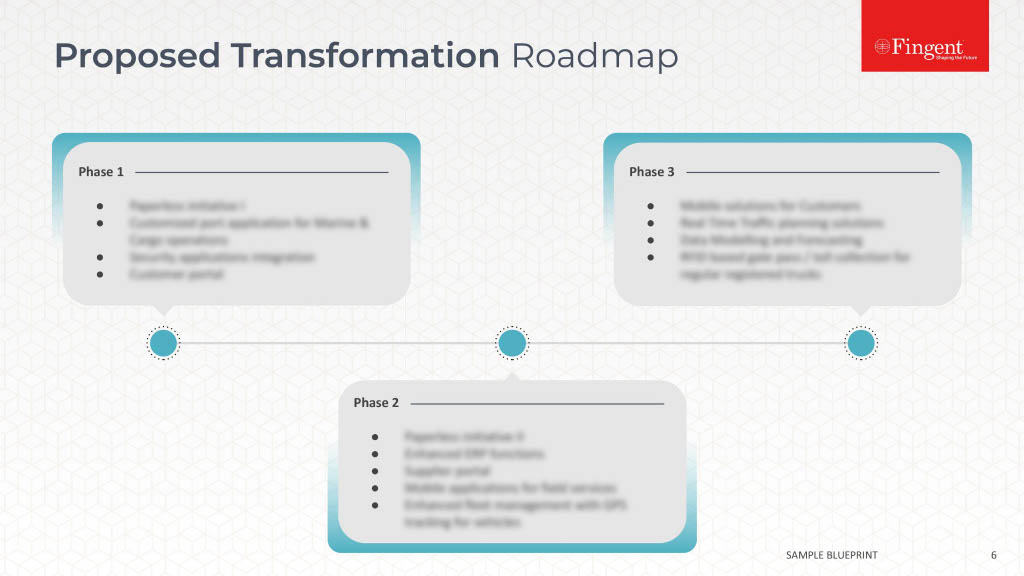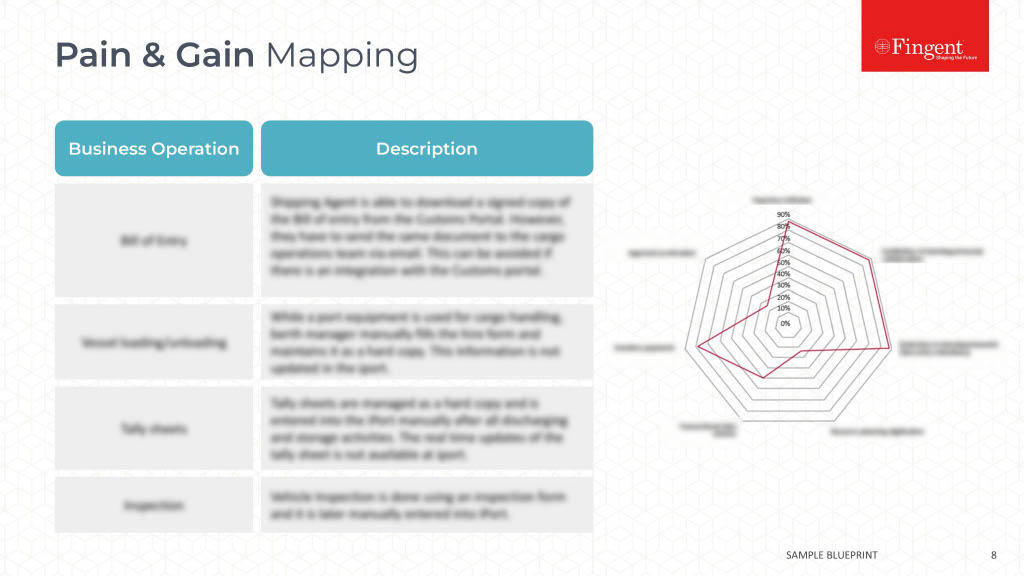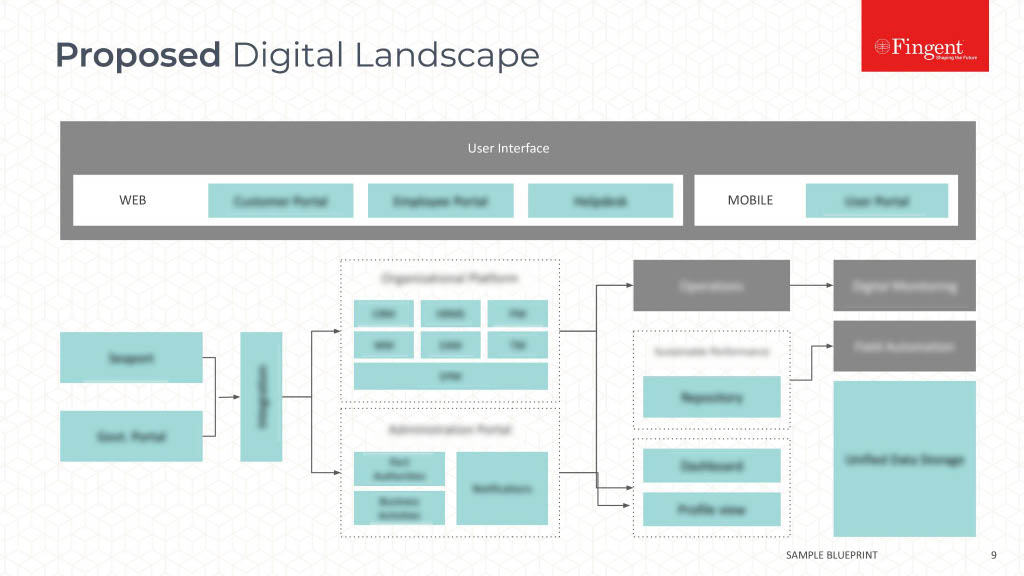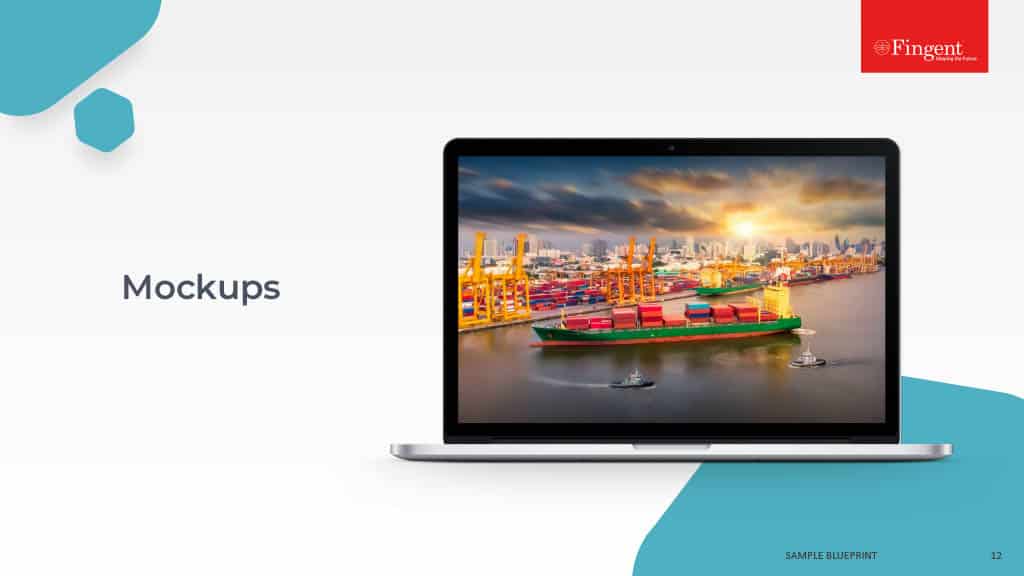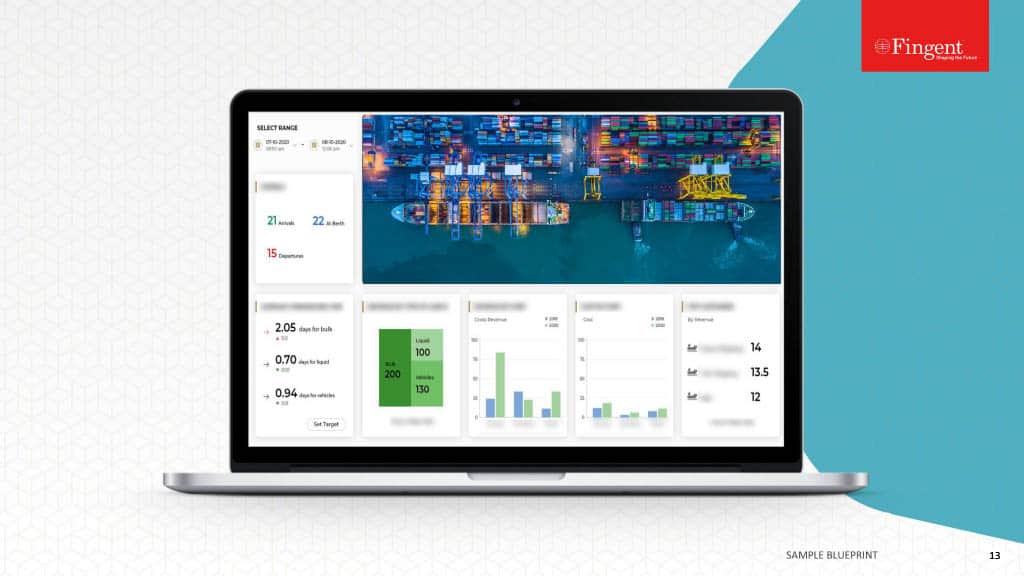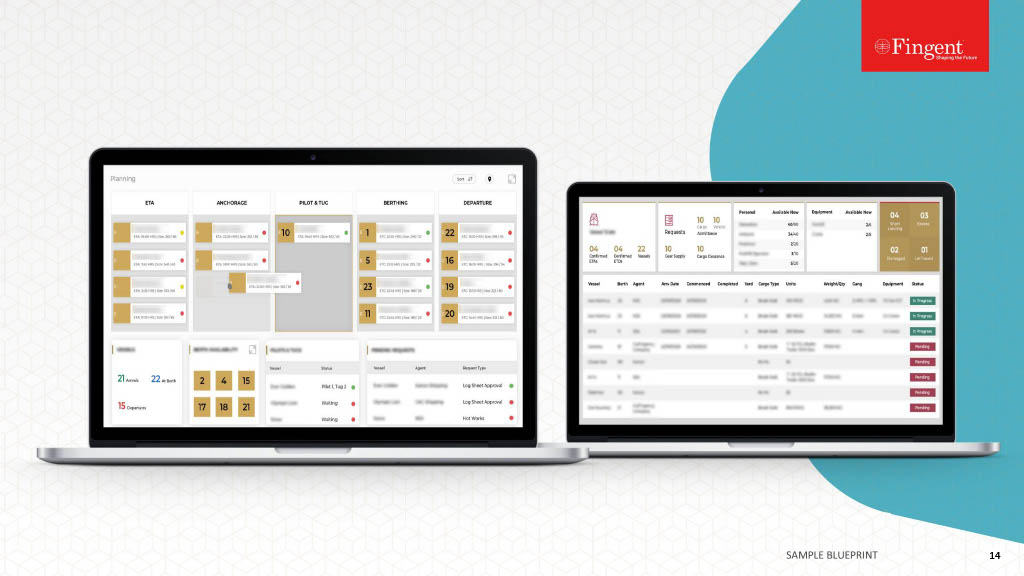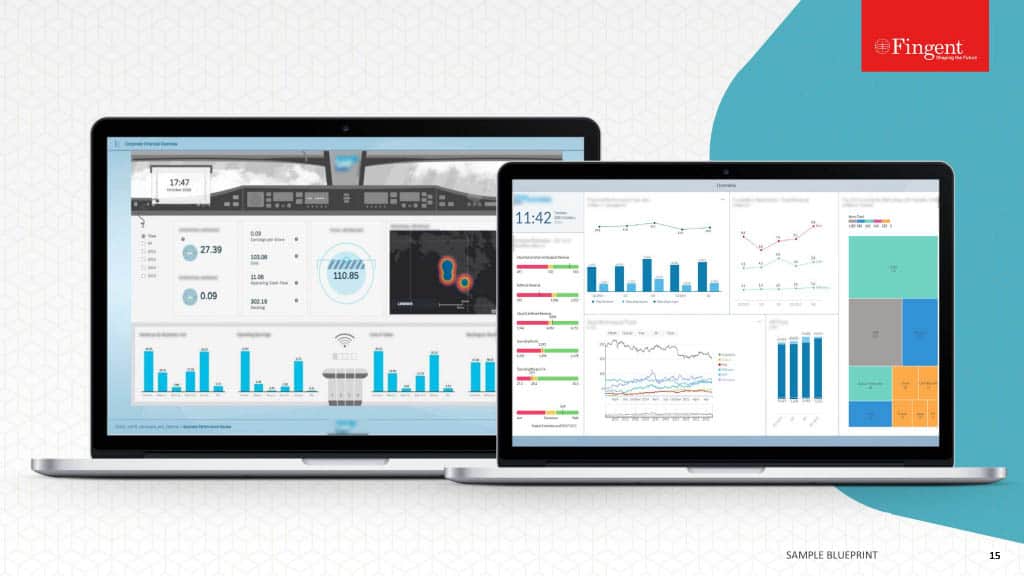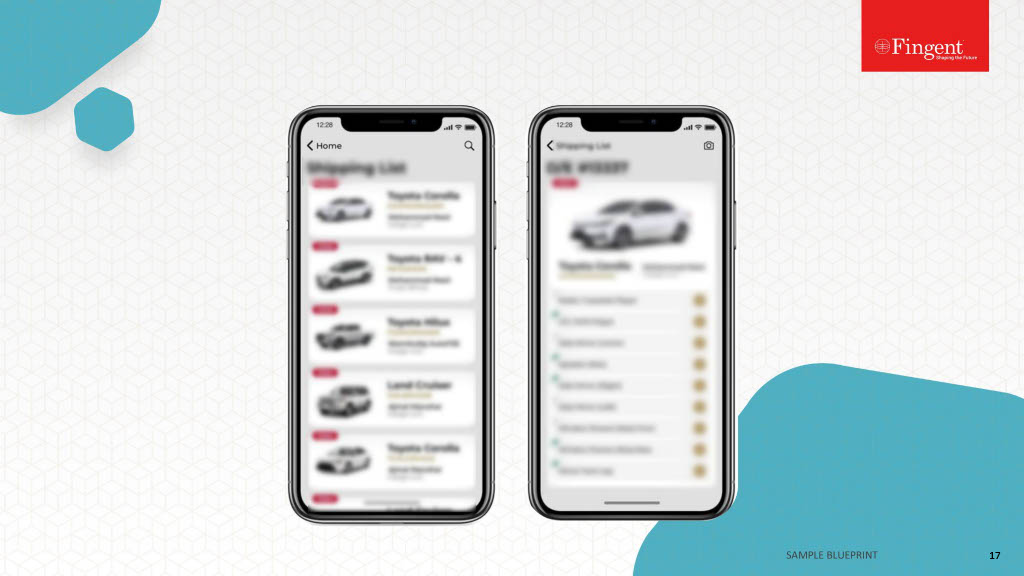Category: Technology
Small and medium businesses are discovering the value of mobile apps, both for the sake of engaging with customers better, and also for their internal business processes. As the practicality of mobile apps increases, way over “branding” for which apps were used not too long ago, the task of creating app has never been easier before.
Non-game app downloads are estimated to grow by 23% on average every year, until 2020, to touch $182 billion in revenue. The increased adoption of smartphones in emerging markets would result in an even greater popularity and adoption of an app. In fact, the number of downloads from mobile app store downloads is expected to double from 2015 levels, come 2020.
The Wind is Blowing in Favour of Apps
Several macro and micro level factors favor the development of enterprise apps.
App development kits are now very affordable and deliver high-quality apps in double quick time. No code and low code kits facilitate the development of apps without requiring any technical or coding expertise. Such kits automate several critical processes and offer intuitive templates which reduce the developer’s work greatly.
The success of any app depends on a sizable user base. The popularity of social media plays into the popularity of apps as well, with consumers now more open to engaging with brands on a day-to-day basis, even if they are not overtly loyal to the brand, or make regular purchases. As long as the app is entertaining and offers something of value, users will continue their patronage. Marketers can leverage the interesting or informative content with a strong call-to-action.
Customer demographics favor mobile apps. An average individual spends 174 minutes on mobile devices each day. Sales conducted through mobile devices are increasing at an exponential phase, and the figure is likely to get better with every passing year as the millennials show a greater affinity to purchase using mobile devices.
Apps Unlock Many Possibilities
The potential functionality possible with apps is also on the rise, making apps more viable than ever before. Enterprises increasingly find making a one-time investment in developing apps, say allowing customers to complete a booking, as well worth the effort, considering the increased business and savings from process efficiency such an app would bring about. If nothing else, apps enable push notifications that place the brand name and the marketing pitch directly in front of the smartphone owner.
The Red Hat Mobile Maturity Survey 2015 reveals about 35% of IT decision makers considering mobile apps as the best way to evolve the business, whereas 37% of them reveal the ability to automate routine tasks as the major motivation for developing apps. About 24% of decision makers developed apps to upgrade web-based processes to mobile. About 90% of enterprise increased their investment in mobile apps in 2016, with the average amount of investment rising by as much as 24%. In addition, a mobile app unlocks various possibilities, such as a field executive being able to present data or portfolio offline to a client, and close the sale immediately, without the risk of losing the prospect to a competitor.
All benefits notwithstanding, the underlying motivation behind enterprises adopting apps in a big way is the positive ROI it generates. About 74% of respondents in the Red Hat Survey attested to ROI from mobile app integration proving the value of implementation, and 78% of companies attest to mobile apps contributing to their success.
The Ease of Making Apps
Small businesses can now easily make both consumer dedicated and internal facing apps. Several services facilitate the creation of professional-looking apps, offering advanced features and functionality such as push notifications, location-based services, social media integration, e-commerce capabilities, mobile optimization, and more. Many services offer highly intuitive templates which allow even technically challenged users to create apps on the fly.
Several popular tools such as Xamarin, Appcelerator, IBM MobileFirst, and others make it easy to develop functional and working apps in double quick time. Rapid app development tools, backed up by databases, such as AlphaAnywhere, no code app creators such as AppPress, cloud-based drag and drop editors such as EachScape, template dominated development providers such as iBuildApp, ready-to-use sample app such as ViziApp, and scores of other options offer a host of ready-made options for enterprises.
Nevertheless, according to Gartner demand for enterprise mobile apps is outpacing development resources 5-to-1.
Enterprises seeking to ride the app wave by simply conjuring up an app and sitting back are in for a rude surprise. The success of an app depends largely on how well it is developed. A big reason for the widespread adoption of mobility is the device being easy to use and fun. Success apps are no exception. The best apps are highly focused. The UX especially make-or-break an app. Users seek powerful apps, yet prefer simplicity. There is also a need to consider the enterprise side of the equation, which is getting all stakeholders on board to reconcile what users want with enterprise requirements, and also ensure the app delivers positive ROI. Mobile apps cannot afford to remain static either, and require constant attention, upgrades, and feature enhancements, to stay relevant amidst an ever-fickle user base.
Only apps designed after understanding the needs of users and facilitating the same in the simplest and easiest way succeed. It takes the right blend of experience and talent to conceive such apps, and we have such experience and talent. Partner with us for your enterprise app development process, and leverage our highly resourceful team, who come with a wealth of experience cutting across industries.
Stay up to date on what's new

Featured Blogs
Stay up to date on
what's new



Talk To Our Experts
B2B ecosystems constitute the backbone for several critical functions in the enterprise including supply chain optimization, sales, marketing, product development, knowledge management, and even innovation. Such B2B ecosystems thrive on the exchange of information and uninterrupted collaboration.
The growth in popularity of mobile devices is all-pervasive. It is not just retail customers who prefer mobile devices for shopping, but also internal enterprise users, who prefer to get things done through the convenience of their smartphones. The proliferation of the BYOD culture, where employees access the corporate network through apps downloaded on their mobile devices and get the job done even when on the move, has further fueled the growth of mobile services in the enterprise.
In such a state of affairs, the business-to-business (B2B) segment is also seeing a surge in mobile services, side-by-side with the much-publicized business-to-customer (B2C) segment. With mobility now becoming central in the scheme of things for B2B ecosystems, here are key trends in the future of B2B enterprise mobile services.
Mobility Solution Management to Mature from EMM to Seamless Integrated Experience
Enterprises are moving to enterprise mobility management (EMM) solutions to gain control over their ever expanding mobility ecosystem. EMM facilitates laying down policies and structures for mobility management, offering a unified, integrated place for the management of devices, apps, and content, and also to enforce security.
In today’s fast paced tech world, organisations have started moving beyond such traditional EMM functionality as well. Enterprise apps, dealing with distinct processes such as procurement, sales, and more, are still independent to one another, existing in silos, without any functional integration between them, and not factoring in conditions relevant to the user. This is changing, with mobile devices now slowly but surely becoming a central node in a connected ecosystem. In such a changed scenario, B2B app users transition from a broken to integrated frictionless experience, with the mobile experiences evolving in terms of channel, context, and construction.
In response to the changing scenario, EMM is evolving from simple device management, to incorporate advanced features such as user credential distribution, single sign-on (SSO), access control, and more, deeply integrating itself into the core IT of the enterprise. Advanced EMM also offers software development kits (SDKs), enabling app developers to offer content control, encryption, data loss prevention policies, and other security-enhancing features.
Artificial Intelligence to Become Well-Entrenched
All the hype surrounding artificial intelligence and automation notwithstanding, most mobile devices still rely on direct user instructions, forcing business users to move in and out of apps to get things done. However, the spread of AI technologies means many tasks now done manually, even with the convenience of apps, will soon be automated, requiring no human intervention, or at best only validation. The proliferation of new AI inspired technology such as Google Glass and more would also decrease the dominance of apps in the scheme of things, offering users more touch points to get things done in a much easier way. The key to such next generation B2B enabling devices is present and upcoming technology innovations.
Rise of Rapid Application Development and Containers
The latest trends in mobile app development, such as the use of low-code and no-code option for rapid application development, the use of containers, and other trends will apply equally in B2B space, just as it shakes up the B2C space. Mobile app development is increasingly becoming agile as well, with greater thrust on design reuse, modular approach, and more.
In the quest for efficiency, the thrust of application development will not just be on creating new apps and solutions, but also on ensuring online workflows work seamlessly with offline mobile contexts. There will be a greater focus on innovation as well, by applying in-vogue and emerging concepts such as mechanisation, machine learning, natural language, immersive analytics, and more. There will be increased integration of voice, video, and images in B2B apps as well. The application of MVP (model-view-presenter) architecture will improve user experience significantly, and drive the application of new technology to spur innovation.
B2B Enterprise Seek Increasing Value from Mobility
In an interconnected ecosystem, the real value of mobility goes beyond the value of a particular function or app. The true value realizes when the app completes a piece of the jig-saw, or enabling well-timed business moments that enables the continuation of a relationship, and or opens up additional value. In such a scenario, the focus shifts from data models to service models, where customer or client experience is the overriding concern as opposed to the data or asset the enterprise holds. What the enterprise has is no longer relevant. Rather, what they do with the available resources makes all the difference.
Enterprises are now forging a tighter integration, and even merging mobility with IT team, to ensure the agility brought about by mobility rubs off on the rest of the enterprise.
In the quest for operational excellence, improved engagement with customers and clients, and also a competitive advantage in an increasingly tough business environment, B2B enterprise mobile services are embracing big changes. Those who miss out stand to lose out big time. For instance, mobility-lagging organizations face the risk of key employees becoming frustrated with the lack of productivity enhancing apps, and resigning.
In such a scenario, it pays to rope in a strategic partner who is competent in the mobility space and has solid experience helping enterprises roll out highly successful mobility campaigns and implementations. We are the right partners for you, as evident from our list of satisfied customers, cutting across sectors.
Stay up to date on what's new

Featured Blogs
Stay up to date on
what's new



Talk To Our Experts
Technology is always in a constant state of flux, and promises to be no different. Successful are those companies who keep an ear to the ground, and discern the latest trends, to gain early mover advantage. Here are the top tech trends unfolding in the coming days.
1. The High Demand for Enterprise Mobility Apps
If there is a sure shot winner in every year, its enterprise app development. As enterprises discover the tremendous potential that mobility brings in terms of productivity improvement, unlocking new possibilities, improving coordination between field staff and the main office, enabling on-the-move executives to remain connected, facilitating real-time decision making, and much more, they are scurrying to develop mobile app solutions for all their critical functions.
Gartner estimates the demand for mobile apps to outstrip supply by a whopping ratio of five to one. The challenge posed by the extremely fluid technology space, where technology changes by the day, is worsened by the severe talent crunch. New app development technologies that promote low-node and no-code options are becoming popular, but there is no short-cut to seasoned expertise to roll out intuitive apps that tick all boxes of customer satisfaction. Here is a list of top enterprise developers.
2. User Experience Becomes All-Supreme
The competition for eyeballs has never been so intense before. With more and more players scrambling to gain the attention of a finite number of customers, enterprises are not just offering multiple points of contact, such as websites, mobile optimized websites, mobile apps, and more, but they also ensure all these channels come fully optimized for the device, to deliver an immersive user experience.
Users able to navigate the website or app easily, finding what they are looking for without putting in much of an effort, are likely to stay long. This raises the stakes of web development and web designing, to offer powerful yet simple user experience, optimized for the device. Web development now becomes a strategic activity, packing in the optimal list of features, in a simple easy-to-navigate design, and ensuring good UX at the same time. This trend of rolling out simple, yet powerful UX will gain further ground in coming years.
3. Collaborative Tools Gain CentreStage
The cloud and mobility are well entrenched, offering executives a world of convenience to work from anywhere, at any time. However, online collaboration still requires supporting infrastructure. Among the various solutions that have come up to facilitate collaboration, Microsoft SharePoint leads the pack, and is likely to continue its domination in future. Microsoft SharePoint is basically a collaboration and document management platform, enabling groups to set up a centralized space to share documents.
In 2016, Microsoft launched SharePoint Hybrid, which is in a sense the best of both worlds, an enterprise platform residing partly on-premises and partly within the Cloud. There is now also the provision to link on-premises version of SharePoint with Office365. As the New Year unfolds, further advancements are in the offing, especially in facilitating better content collaboration, mobility, intelligence and trust. As the cloud become even more popular, the cloud version of SharePoint will likely see big improvements.
4. The Return of the ERP
Enterprise Resource Planning (ERP) is in a revival of sorts, after years of lull. ERP may seem as anarchism in today’s fast paced world, considering deployment of ERP required complex rollouts running into years. What pushes the case for ERP is top ERP vendors reinventing themselves and delivering a far faster and smoother rollout. The game changer is cloud based ERP, or a SaaS offering, allowing enterprises the unprecedented flexibility of picking and choosing the modules they like for their ERP implementation. SaaS-based ERP is likely to gain considerable ground in coming years, as a means for enterprises to remain organized on a structured and connected way. Success would depend on the ERP solution that continues to deliver traditional service, and leverage the available big data to the hilt.
Among the many ERP vendors, SAP, the time-tested old warhorse leads the pack, as the most popular ERP suite preferred across sectors and company size.
5. Artificial Intelligence and Augmented Reality Goes Strong
That Artificial Intelligence (AI) has awesome potential is never in doubt. AI powered tools such as Google Translate, Amazon’s Alexa home assistant, and more have already become well entrenched and hugely popular offerings. More and more such apps would go mainstream in the coming year, with the power of Artificial Intelligence tapped for everything from driver-less cars to medical research.
Side by side, virtual reality will continue its golden run, but it eventually stands to be supplanted by Augmented or Mixed Reality. Virtual Reality based products such as Oculus Rift, Sony’s PlayStation VR and HTC Vive are the rage now, but in the coming days, AR based products such as Pokémon Go, which allow superimposing information or content of any kind on real world settings will take over.
6. Internet of Things Gets a Reality Check
The Internet of Things received it first big challenge in September 2016, when some malware took control of millions of internet-connected devices and launched what has been the largest-in-class attack to date. The attack left large swathes of internet inaccessible for days. Undoubtedly, the coming days will see several such attacks, much more potent, bringing a reality-check to the hype surrounding the Internet of Things. There will be a major focus on security as well in the IoT scheme of things.
IT stakeholders are still like hares caught in headlights, when it comes to cyber attacks. To counter security threats, encryption has now become mainstream, to the extent the New York Times is now accepting news tips via the encrypted app Signal. However, it would require much more innovation to truly secure networks, and it remains to be seen whether any path-breaking security paradigms emerge.
7. Convergence Inches Closer to Reality
This year will also witness a convergence of the internet and television, or live TV, allowing us to see television when we want it, rather than fix our schedule around television shows. YouTube is already putting together a live TV package, and players such as Hulu and Amazon are positioning to enter the fray.
Mere knowledge of the top tech trends is useless unless the enterprise is capable enough to leverage the trends, to roll out cutting edge solutions that confer early-mover status and significant competitive advantage. This is where most enterprises, faced with talent crunch and an already overburdened IT team, falter. We can help you here. Our team of highly experienced and talented developers is always on the top of the game, having successfully executed several mobility and other solutions for enterprises cutting across sectors and industries.
Stay up to date on what's new

Featured Blogs
Stay up to date on
what's new



Talk To Our Experts
Digital technologies have permeated and disrupted almost all sectors, and logistics companies are no exception.
Optimization and efficiency, combined with speed and seizing the moment are the keys to success in today’s highly competitive advantage. Technology is the key enabler allowing companies to realize these aspects.
Leveraging Technology for Strategic Planning
A report by transport and logistics analysts Oliver Wyman reveals transportation and logistics companies increasing revenue, yet having reduced profits, over a 10-year period, and come with the recommendation to “standardize and streamline structures and processes, developing industry oriented and innovative solutions, thinking and acting in terms of networks.” Technology is the key enabler in this regard.
On average, transportation companies invest about 5% of their annual revenues in digital operations, with the main focus on digitizing their customer interface. The thrust these days is especially on mobile apps and solutions, to offer a personalized experience for their customers, and track the movement of vehicles accurately. However, side-by-side companies are also increasingly using digital technology to unlock new business models, focused on the creation of value-added services and innovative solutions.
The Use of Big Data to Improve Operations
The need to cut cost and take real-time action, in a competitive environment where margins are wafer thin, require logistics companies to take greater control over their supply chain and ensure the processes take place seamlessly, at great speed. Towards such ends, logistics companies are increasingly applying Big Data technology, to capture and analyze data, to streamline their operations and optimize the supply chain.
Computers apply algorithms to crunch Big Data, unlocking insights and opportunities not possible before. Such insights enable streamlining operations and optimization of the supply chain.
- Data based automation, especially automated load building and optimizing the inbound and outbound movement of cargo, enable optimal usage of available resources, reduction of waste, and facilitate lean operations.
- Effective real-time fleet management solution facilitates “uberization” of trucks and other delivery vehicles, where empty containers may be utilized immediately by matching it to the nearest load. Mobile solutions enable greater transparency into the operations.
- A comprehensive data based inventory and supply chain management system unlocks silos, and facilitates end-to-end visibility to inventory, orders and shipments across the supply chain. Such transparency allows improved tracking of inventory movement, facilitates the reduction of network-wide inventory levels, and enable managers to respond dynamically and in real-time to any events or issues that disrupt or hinder the supply chain.
- Analytical data makes explicit greenhouse emissions and carbon footprints of truck and machinery operations, allowing companies to take steps to become carbon-neutral, thereby contributing to the cause of “Green logistics.”
- The combination of machine learning with supply chain management enables turning reams of passive data into actionable business intelligence. Logistics companies apply the wealth of data related to the movement of their goods and trucks to identify patterns related to customer trends, identify what works well, unearth market insights, and gain competitive advantage.
Digital Improves Security
Supply chain disruption is the number one global business risk for logistics companies. Technology enables fortifying the supply chain in many ways.
- Digital locks make the inventory more secure, offer a robust layer of security, in addition to physical security.
- Optimal route planning, combined with real-time tracking of cargo movement through mobile apps enable routing of cargo by avoiding congestion points and trouble spots, to minimize risks and interruption.
Internet of Things (IoT) Enhances Operations
The earliest applications of RFID and nascent IoT technology have been in asset tracking and warehouse management. For instance, rather than simply tracking inventory of pallets and crates, enterprises use sensors, beacons, RFID and other technology to gather information on the state of the connected item, such as when the “thing” requires maintenance, the expected life of the “thing,” and more.
IoT contributes to highly integrated warehouse management solutions, enabling precision movement and accurate tracking of movement of goods. The applications of IoT instruments in logistics are virtually endless, ranging from tracking transportation goods in a temperature controlled way to ensuring the correct package reaches the correct location at the specified time and more.
The trends in the immediate future include connected and ‘autonomous’ trucks, warehouse robotics, and smart warehouse solutions, all of which will improve efficiency manifold, speed up operations, and improve accuracy.
Technological Innovations Unlock New Possibilities
Logistics companies use technology not just to improve efficiency of operations, but also transform the way operations take place in itself. The use of robots in large warehouses, and to handle hazardous goods is already widespread, as is the driverless, remote-controlled vehicles.
The next big thing is the use of drones, especially for last mile delivery. The U.S. Government is already piloting a drone-based traffic monitoring system. Countries such as Spain, France, and The Czech Republic and others have several research projects looking into the use of drones for traffic management. The widespread use of drones would speed up things considerably, reduce the hassles, strain and inefficiency associated with maintaining an army of delivery boys, and also reduce costs considerably.
A start has already been made, with Amazon Prime Air already making legit deliveries using drones, in less than 30 minutes from the time customers place an order. When the technology becomes widespread, logistics will change like never before.
Improved Customer Satisfaction
Proactive transportation and logistics companies go beyond improving their operational efficiency and retaining greater control over their operations, to enhance customer satisfaction.
Technology propels a shift to a customer obsessed operating model, enabling the delivery of personalized and customer-focused logistics, with faster cycle times.
Hyper-connectivity facilitates not just big data, but also speed data. Speed and timeliness, manifesting in seizing the moment enable companies to match customer expectations and deliver competitive differentiation over its competitors.
It requires considerable expertise in both business operations and the latest cutting edge technology to roll out successful technological solutions acceptable by the rank and file. By partnering with us, you can piggy-bank on our vast and extensive experience in delivering highly intuitive apps and other solutions for transportation and logistics firms. Our rich talent pool, combined with extensive experience allow us to add value to your strategy, and roll out seamless apps that make your processes highly efficient, allowing you to cut costs, unlock new possibilities, and take customer satisfaction to new levels.
Stay up to date on what's new

Featured Blogs
Stay up to date on
what's new



Talk To Our Experts
Here are the ten emerging and strategic business and technology trends that will shape the way individuals and businesses will derive value from technology in 2017. Vice president and Gartner Fellow, David Cearley, mentioned 3 themes, viz., intelligent, digital, and mesh that will be the disruptive technology forces for the coming years.
Stay up to date on what's new

Featured Blogs
Stay up to date on
what's new



Talk To Our Experts
Inspections are an inevitable part of life in enterprises for quality checks and compliance purposes. Such inspections, though unavoidable divert resources and distract focus from the core business activity, as such, is seen as a drag on resources.
However, a smooth and streamlined inspection workflow, integrated to core business processes can minimize the disruption and actually leverage the inspection process for the benefit of the enterprise.
Here are five ways to streamline inspection workflows for the New Year
1. Have Clarity of Purpose
Have clarity of purpose, and understand the exact deliverable required out of the inspection workflow. For instance, if the inspection is carried out as part of legal compliance, make sure the workflow captures all the required information necessary to populate the reports, and the process flow complies with the requirements of the regulations. If the objective is adherence to quality standards, keep the end in mind, and plan on how the workflow will track the required statistics.
Big is not always beautiful. Resist the temptation to introduce wholesale or big changes, just for the sake of it. More often than not, small incremental tweaks made at the right place can deliver huge improvements.
2. Treat Documentation Seriously
Strange as it sounds, at times even the best-oiled enterprise may overlook the obvious. Documenting or defining processes is one such instance of the often overlooked obvious. Documenting the inspection workflow lends clarity and order to the process. It also makes explicit complex, convoluted, or roundabout processes that can be eliminated or bypassed.
While there is a need to make the documentation as exhaustive or thorough as possible, to capture all processes, there is also a need to keep it simple. Infusing the documentation with illustration and flow charts serves the purpose, and makes it doubly easy to identify complexities, and make amends.
Break down the process into discrete steps, with more granular the process the better. Also, rank each process in order of importance, giving priority to streamlining processes that actually matter, or are the most critical. Many processes are interdependent, and as such streamlining such processes may be best effected together with such interconnected process, for greater effectiveness.
3. Value Progress over Perfection
Many managers fall into the trap of perfection. No workflow is perfect, and even the best-laid plans falter in the face of practical exigencies. Aim for progress, or getting the work done in the fastest possible time, with minimal effort and resource, rather than artistic perfection. The caveat is to ensure no process mandated by regulatory or compliance requirement are skipped or bypassed in the quest for speed or efficiency.
In any case, contemporary business is extremely fluid, where workflows need to change rapidly, to cater to the evolving requirements. Trying to cope with the requirements of an ever-changing infrastructure with stagnant workflows and technologies would be like trying to compete in a drag race with a jalopy.
For greater effectiveness and accurate results, match the changes in business processes, brought about by technology, with changes in workflow inspection methodologies. A case in point: IoT may enable turning lighting systems on and off automatically, depending on the time of the day, sensors detecting movement of people, and other considerations, An inspection schedule that offers a checklist involving switching on and off the light at set times becomes counterproductive and disruptive.
4. Invest in Collaborative Workflows
The world is increasingly becoming collaborative. No initiative to streamline processes works without involving the key stakeholders in the mix. With regards to inspection workflows, the field staff, or employees who actually conduct the inspection would know better than anyone else how to improve the process, how to enhance it, and how to remove roadblocks. Such stakeholders may have suggestions for even trying something radically new to achieve the same thing.
Make the process collaborative, and involve the field staff to buy their support for the initiative. Failure to do so will invariably result in a disconnect, with the manager sitting in the cabin, looking at flowcharts and powerpoint presentations, deciding on what would make the process efficient, when the actual situation on the ground may be completely different.
5. Automate the Process
Many businesses, in fact about 70% to 80% of them, still use spreadsheets to manage their workflows. Spreadsheets offer convenience, but are error-prone, require lots of manual work, and can create serious versioning clashes. It makes sense to invest in modern field inspection software that automates the process, to improve accuracy, reduce manual entries, and speed up the process. Such inspection suites capture key information automatically, leveraging the camera, bar-code scanner and other features available in the smartphone, populate fields seeking duplicate or derived information automatically, auto generate reports, and issue automated alerts as required. Intuitive workflow inspection software makes it easy to change workflows as required by simple drag-and-drop mouse clicks, to meet the exigencies of the situation, or to reflect the changing needs of the business.
Inspections are not easy. A mobile inspection app that eliminates paperwork, streamlines the workflows, and makes the process transparent goes a long way in reducing the drag, and ensure the inspection meet its realized objectives.
Stay up to date on what's new

Featured Blogs
Stay up to date on
what's new



Talk To Our Experts
The world of business and technology is ever on the move. Businesses that do not change with the time invariably face obsolescence. Here are the top five developments small businesses can expect to impact their business, in future.
The World Will Increasingly Go Mobile

More are more customers now prefer mobile apps for browsing products conveniently on the move, quick and easy checkout, and other benefits. For the business, mobile apps offer loyalty, as customers who download an app are less likely to go elsewhere. It also allows a convenient way to reach out to customers. About 50% of small businesses will have a mobile app in coming years, and as much as 70% of their online traffic will be through this medium. Through mobile apps, 55% of the small businesses aim to increase sales, 50% of them aim to improve their customer service, and 50% of them aim to become more competitive in their niche. Even sectors where mobile apps have traditionally not found a strong footing, such as restaurants, event organizers, churches and funeral services, and others, is expected to roll out mobile apps in a big way.
E-commerce Will Get More Innovative

Newer, fully integrated and easy-to-use payment options will take center stage. Options such as Google Pay, Apple Pay, Samsung Pay and even PayPal checkout options will become common.
There will be greater integration between online and offline, with customers using apps while shopping in brick and mortar stores to make comparisons, or conversely, online customers picking up orders from physical stores. About 11% of US consumers prefer using their smartphones to make in-store purchases.
With too many e-tailers all vying for the same market, the thrust will be on innovation as the means to stand out and gain competitive advantage.
Big Data will Enter Small Business Space in a Big Way
Hitherto, the costs and efforts associated with big data meant only big businesses could leverage it for their benefit. But the times are changing. The big data will become “democratic” enough, with new solutions enabling even small and medium businesses to embrace the technology in a big way.
Small businesses would increasingly rely on the mountain of customer and historic sales data available at their disposal, before taking marketing and other decisions. 82% of marketers already opine big data as vital to their campaigns. More and more small businesses would leverage big data to personalize product offerings, explore untapped offerings, and engage with customers in a personalized way, and thereby gain competitive advantage.
The big thrust will be on the infrastructure required to collect, analysis, and formulate the required insights.
The Cloud and IoT will Drive Backend Operations

2024 is also the year when the Internet of Things (IoT) will permeate into everyday lives, and change how business is run. Small businesses will be able to leverage IoT to improve connectivity among their workforce. For instance, a smart app that integrates a wearable camera could improve connectivity among geographically dispersed employees, and also improve accountability. Connected devices could report low inventory and reorder automatically, reducing costs. The possibilities are endless.
New Paradigms will replace the Old in Marketing
Digital marketing is going through a churn. Banner ad click-through rates continue to decline, and organic reach for businesses via social media is now almost non-existent. About 49% of consumers now employ some type of ad blocking. In such a scenario, businesses are exploring newer ways to reach out to their target market.
One method likely to go centre stage in future is permissions marketing. Here, consumers give marketer the privilege, rather than the right to offer highly personal and relevant content. Needless to say, only high-quality content and authoritative content will make the cut.
Another method likely to gain big ground is influencer marketing. Word of mouth is already the driving force behind many purchases. Influencer marketing is the next stage. Influencers are persons of authority in their network. Small businesses will look to curate employees as influencers within their circle, or invest in developing external influencers.
What other trends do you foresee for small businesses? Drop in a comment.
Stay up to date on what's new

Featured Blogs
Stay up to date on
what's new



Talk To Our Experts
It’s boom time for mobile apps, thanks to the proliferation of smartphones, and the consequent mobile-first approach. Enterprises are rolling out apps by the dozens, not just to offer cutting-edge solutions to their customers, but also to manage their internal operational and business processes fluently.
However, amidst the din, the growth and trajectory of the mobile app development platform are influenced by several extraneous factors. Here are the top emerging trends shaping mobile application development for the next four years.
BYOD and BYOA Fuels Enterprise App Development
While “Bring your own devices” (BYOD) is already well entrenched for a few years now, employers are now rolling out “Bring your own access” (BYOA) as the next evolutionary step. BYOA is essentially wireless remote access to a company’s network, for home workers and executives on the move. The twin forces of BYOD and BYOA is creating a big surge in demand for enterprise application development services, as enterprises seek to offer employees access to the specific functionality and resources they require through apps.
By 2017, more than 50% of enterprises are expected to roll-out a minimum of ten mobile enterprise applications. Tools such as AngularJS, PhoneGap, Ionic, Sencha Touch, Cordova and others facilitate agile hybrid app development projects.
App Development to become Increasingly Open Source and Collaborative
“Open source” and “collaboration” are the in-thing in the app development ecosystem. Setting the trend, Swift, Apple’s open-source programming language, leapfrogged Objective-C both in popularity and usage, on the TIOBE index, in January 2016. About 76% of Hadoop users plan to use the tool more extensively in 2017, and only 3% plan to decrease its use.
But what is shaking the mobile app development market, even more, is the emergence of DevOps, a spin-off from the time-tested agile and lean methodologies. DevOps, derived from “development” and “operations” is an establishment of a cross-disciplinary community, involving developers, tech users, and other stakeholders of the software under development. The aim is to ensure open communication and collaboration among the various stakeholders, to build, evolve, and operate rapidly-changing resilient systems, at scale. DevOps especially automates application testing and deployment processes, reducing errors and speeding up the process considerably.
About 39% of global software development firms have already implemented DevOps technology to establish a collaborative app development environment.
A manifestation of how an increasingly collaborative development process can improve apps lies in UX development. UX or user experience becomes more important than ever before and is now a big parameter for measuring the success of a mobile application. App developers are now co-opting expert graphic artists, illustrators and animators to make their apps more visually appealing and user-friendly. Emerging trends, such as parallax graphics, grid-based interface designing, split-screens, splash screens, and micro-interactions, all of which are set to go mainstream in 2017 will raise the stakes for a collaborative platform that enables seamless communication with specialists in such new and emerging niches.
Side-by-side with increasing collaboration, app development is also set to become more democratic. Various do-it-yourself (DIY) tools and techniques, such as the Microsoft’s PowerApps, IBM’s Mobile First and more offer basic WYSIWYG design with custom templates and drag-and-drop functionality, and facilitate automated development. The Low Code or No Code “Citizen’s development” concept is still in its infancy, but can integrate with collaborative tools and gain traction.
The Cloud takes Centrestage in Backend Operations
About 75% of all smartphone users prefer apps with reliable server-side backend support that allows them to access the app on any device, from anywhere, without loss of data. Such cloud powered apps take minimal space in the phone storage as well.
The cloud makes multi-device synchronization of apps seamless, offer unprecedented flexibility in coding, testing, and launching apps, and speed up the app development cycle considerably. Cloud based mobile-backend-as-a-service (MBaaS) enable developers to build and install enterprises applications, to store enterprise data. Cloud integrated development environment (IDE) solutions, delivered through cloud platforms, allow developers to work in a collaborative environment. Full-stack software developers, front-end software developers, back-end software developers, community developers, mobile application developers and others leverage these tools to communicate and coordinate seamlessly.
New Technologies and Security Challenges Embrace Each Other
The Internet of Things is already a $19 trillion industry, and is expected to grow exponentially over the next five years. The number of connected devices is expected to touch 28 billion by 2020. As of now, IoT is mainly present in wearable technology, and some gadgets such as smart thermostats and smart bulbs. However, IoT will be the focal point of mobile application development in the next few years, with developers creating apps to deliver personalized user experiences across a variety of IoT enabled devices. Developers would increasingly incorporate not just smartphone features such as NFC and fingerprint scanning, but also emerging technologies such as mobile location services, location based wi-fi services, Beacon technology, GPS, and more, to make their apps smarter and dynamic.
Security has always been a major concern, and the much more vulnerable emerging technologies make the problem even more critical. In what is an ominous portent, most of the top 100 apps in the Google app store have already been hacked. The implication of an IoT breach is much more, having the potential to cause physical damage and even human lives.
While developers are currently hamstrung by the lack of uniform standards that defines acceptable user security against privacy breach, things are slowly changing. The 2016 Apple World Wide Developers Conference (WWDC) makes it mandatory for all iOS applications to incorporate the robust App Transport Security, and also heavy encryption. The focus on security is set to increase in the coming days, with radically new approaches.
More than 58% of organizations have already deployed enterprise applications. However, demand for mobile enterprise apps will be about five times more than the combined supply capacity of developers! Do not miss the bus amidst the scramble for talent. Contact us to leverage our expertise and experience in rolling out mobile apps of the highest quality, to transform your business.
Stay up to date on what's new

Featured Blogs
Stay up to date on
what's new



Talk To Our Experts
Mobile payments are of a recent origin but have caught on like wildfire. Mobile-driven commerce now exceeds US$972.25 billion, and mobile payments are expected to touch US$3 trillion by 2021. This figure will equate to about 11% of all consumer card payment volume, up from the present levels of 6%.
Here are the top trends shaping mobile payments market.
Demographics Shape Mobile Payment Growth
The bulk of the growth in mobile payments market is from the Asia-Pacific region, especially China. Chinese customers now make more payments through mobile devices than through desktops. The high level of smartphone penetration cuts across both urban and rural areas.
The mobile-first mindset is catching up in the US and the UK as well. By 2020, more consumers in these countries will make payments for goods and services over smartphones than through desktops. About 46% of all digital commerce in the US and 38% of all digital commerce in the UK would be through a mobile device by 2020, up from 20% and 12% respectively, in 2015.
It comes as no surprise that cutting across geographies, the up-and-coming generations are in the forefront of adopting new technologies, and embracing mobile wallets in big numbers.
Convenience of On-the-Go Consumption Drives Growth
The chief factor driving the growth of mobile payments market is convenience.
M-payment allows consumers to transfer money for the purchase of goods and services, pay utility bills, collect paychecks, take insurance, make loans, and do much more, all with just their smartphone or tablet. People can either retain some money in their mobile wallet or link their bank account to the mobile wallet.
Furthermore, mobile devices make it very easy for people to conduct online transactions when commuting, or in the middle of doing something else. A consumer, having seen a hoarding when commuting to the office, no longer need to wait to get in front of a computer, but can rather pick up her smartphone and purchase the product immediately. Such a high level of on-the-go consumption is facilitated by the availability of user-friendly apps, which in turn is powered by mass subscriber volumes resulting from high levels of smartphone penetration, and widespread internet connection.
The Rise of Biometrics
Even as mobile payments surge, security remains a prime concern. Considering 70% of online fraud taking place through identity theft, the stakeholders of the mobile payment industry are increasingly looking at biometrics as a means to contain fraud. Biometric authentication involves validating the transaction based on the user’s fingerprints, iris and retina scanning, facial recognition, voice, or any other unique feature. With more and more smartphones now featuring fingerprint scanners, and other biometric enabling options, biometric authentication will become a common feature in the coming years.
The Quandary of Proximity Payments
The bulk of mobile payments today is remote mobile payments. The other side of mobile payments, proximity payments, is yet tot to gain sufficient traction, despite the potential. Gartner estimates money transfer to continue dominating mobile transactions, with an estimated 67% share in 2017, and predicts an overall annual growth of 35% in mobile transaction value, between 2013 and 2017. Nevertheless, with more and more traditional cash-only services, from taxis to hairdressers and from cleaning services to bakeries now able to accept mobile payments, proximity payments is sure to catch up in the near future.
What has restrained proximity payments so far is the big security hole in NFC, the enabling technology, as exposed by Charlie Miller, a smartphone hacker, in a 2012 Black Hat security conference. The rise of Bluetooth Low Energy (BLE), an alternative and more promising technology, coupled with several providers such as AliPay offering hassle-free mobile wallets means proximity payments is on the cusp of being the next big thing in mobile internet.
The Rise of Virtual Currencies
E-money ranging from bitcoins to Facebook Credits, and from egold to merchant loyalty points are becoming more and more popular. Such virtual currencies create a lock or loyalty, as it cannot be transferred outside of the system easily. While mainstream m-payment solutions steer clear of many such payment options owing to its legal gray area, there is increasing interest in the technology that drives such cryptocurrencies.
Supporting virtual currency such as bitcoins is peer-to-peer payment infrastructure, which allows making payments to any payee in the network, without routing it through a central agency or middleman. Such transactions are more robust, and is now very popular in the dark internet, for under-the-hood and illegal transactions. Whether currencies such as bitcoins will become mainstream is to be seen, but infrastructure such as peer to peer networks is sure to be adopted by legit providers as well, displacing existing m-payment systems, owing to its inherent security advantages.
The payment industry is in the midst of a new Gold Rush. In 2010-2011, about 700 companies invested about USD $3.4 billion in innovation related to the payments sector, and many of such investments are bearing fruit now. Gartner estimates global mobile transaction volume and value to average 35% annual growth between 2012 and 2017 and forecast a market worth $721 billion, and more than 450 million users, by 2017.
Despite the current limitations such as lack of a universally enforceable standard, m-payment is on its way to becoming a viable alternative to physical currency. E-tailers and other businesses are certain to lose out if they do not prepare for the mobile payment space. Success depends on setting up a robust and easy infrastructure, and this is best served by partnering with an experienced and resourceful provider, who has both the experience to do a good job, and the ingenuity to leverage the latest advancement and develop cutting-edge solutions. We fit the bill in all counts. Contact us today for all your m-payment requirements.
Stay up to date on what's new

Featured Blogs
Stay up to date on
what's new



Talk To Our Experts
The impact of mobility goes much more than facilitating on-the-go online transactions. Mobility powered digital commerce has the potential to give a big boost to financial inclusion, throwing open banking facilities to people hitherto cut off from the same. At a macro level, it can propel growth, boosting the economy and the GDP of the country itself.
“Emerging economies,” such as India, Brazil, Philippines, and others are neither here nor there in terms of the economy. While such countries do have a strong banking system, generally the system is archaic in nature, with limited number of savings and credit products, and high fees. Moreover, a good chunk of the populace and small businesses, 1.6 billion people and 200 million micro, small and mid-size businesses to be precise, do not have access to such credit and savings products altogether. The mobile phone is a panacea to such woes, offering both the deprived and those already in the conventional banking system access to digital finance.
Digital payments and financial transactions, conducted through smartphones and other mobile devices are now a vital cog in the financial infrastructure of modern, developed economies such as the US and the Eurozone.
How Digital Finance Benefits
Digitization of financial transactions extends the traditional mobility benefits to finance, facilitating anywhere, anytime transactions, and flexibility in sending and receiving payments. It improves efficiency of the process, and offers a world of convenience as well. This apart, the widespread adoption and use of mobile phone powered digital finance is a win-win for everyone.
- Individuals and small businesses gain easy, wider, and often cheaper access to loans, over and above traditional and informal sources. McKinsey estimates an additional $2.1 trillion of loans would be available to individuals and small businesses, from current levels.
- Loan providers not just gain access to a whole new customer base, but also stand to save $400 billion a year in direct costs, considering digital accounts are 80% to 90% less expensive to service compared to traditional accounts. Overall, financial services providers could increase their balance sheets by an estimated $4.2 trillion.
- Digital finance can reduce leakages in collection of taxes, delivery of public services and transfer of subsidies. Governments gain a potential by $110 billion per year on these fronts.
- Service providers, such as telecommunications companies, payments providers, financial-technology start-ups, retailers, and others have a huge business opportunity on their hands. Even within banks and financial service providers, digital finance offers a new level playing field, giving everyone a more-or-less equal opportunity to establish dominance.
Consider the case of a farmer in rural India, who travels for kilometers and spends almost the whole day, just to make a utility payment. The same farmer gets paid just once or twice a year, during the time of crop harvest, but has no access to banks, to save the money. His business is highly risk-prone, at the mercy of monsoons or droughts, but he has no access to insurance. The smartphone can transform his life, by allowing him to accept payment in bank account, make utility payments in just a few minutes through the mobile wallet linked to the bank account, and likewise buy crop insurance on-the-fly.
Digital finance also allow small businesses integrate themselves to the formal mainstream economy, without being dependent on the local middleman. For instance, 70,000 small e-tailers from remote and desolate rural communities in China now sell on the Taobao marketplace, accepting payments digitally.
At a macro-level, digital financial inclusion has the potential to increase the GDPs of emerging economies by around 6%, or by $3.7 trillion, by 2025. This figure equals the size of Germany’s GDP. The resultant growth has the potential to employ 95 million people. The potential however varies from country to country, with countries such as India, Ethiopia and Nigeria having the potential to add as much as 10% to 12% to their GDP, whereas countries such as China, Brazil, and Mexico could add about 4% to 5% to their GDP.
The Long Road Ahead
Realization of such benefits was a long drawn out process in the developed countries, with digital finance maturing over time, in sync with the development of mobile internet infrastructure. Emerging economies can gain similar benefits while fulfilling the pressing need of financial inclusion, without going through similar efforts, since the mobile infrastructure is already in place in most parts of the world. About 80% of adults in emerging economies already have a mobile phone, whereas only 55% of them had a bank account, as on 2014.
However, there is still considerable ground to cover in most emerging economies before they can realize the full benefits of digital finance.
- Individuals may need to purchase a smartphone, or would need to upgrade their mobile phones. While this may sound obvious for the urban educated elite, it is still a tall ask for the rural poor, the primary targets of financial inclusion.
- Mobile service providers may need to roll out 3G and 4G networks over a wide area, before mobile powered digital finance can become widespread.
- Businesses would need to roll out digital financial products that offer better value and cost less than conventional financial tools and products. If they import digital financial products from the developed economies, they need to localize it as well, and ensure it meets local compliance regulations.
- Digital payments could unlock new finance and business models, such as peer-to-peer lending. There is a pressing need for regulatory innovation to facilitate such new models.
- There is also a need to change behavioral patterns and preferences, to make digital finance acceptable. NGOs or other agencies need to take the lead in educating the masses on smartphone usage and how to gain benefits from digital finance.
The onus is on the governments and stakeholder businesses to make a concerted and coordinated effort in such direction.
Efforts are already underway in several emerging economies to facilitate digital finance. For instance, in India, the “Pradhan Mantri Jan Dhan Yojana” (PMJDY) aims to establish the backbone of digital payments initiative by opening bank accounts for all citizens.
However, much work still needs to be done. Financial and banking apps emerge as major conduits for digital finance transactions. Players who aim to grab a pie of the lucrative digital service market need to roll out intuitive apps that enable various possibilities and make digital transactions easy. It pays to partner with an established provider who have considerable experience in developing financial apps and software. We fit the bill perfectly on all counts, offering app and software solutions to enable your business gain new ground.
Stay up to date on what's new

Featured Blogs
Stay up to date on
what's new


















